


• Ultra-Lightweight Construction
• Exceptional Strength & Smoothness
• Superior Corrosion Resistance









• Ultra-Lightweight Construction
• Exceptional Strength & Smoothness
• Superior Corrosion Resistance










































STAY IN YOUR ELEMENT — EVEN WHEN THE ELEMENTS ARE OUT TO GET YOU.








Power through whatever punishments the ocean throws your way with the all-new QUEST ™ Series from Minn Kota ®. These brushless motors give you ultimate control in unforgiving conditions with a rugged design, run-all-day battery life, shaft lengths up to 100 inches and game-changing torque. Choose the all-new Riptide Instinct ™ QUEST – the only saltwater trolling motor with push-button Auto Stow and Deploy – or Riptide Terrova ® QUEST for proven toughness.






BEGIN YOUR QUEST


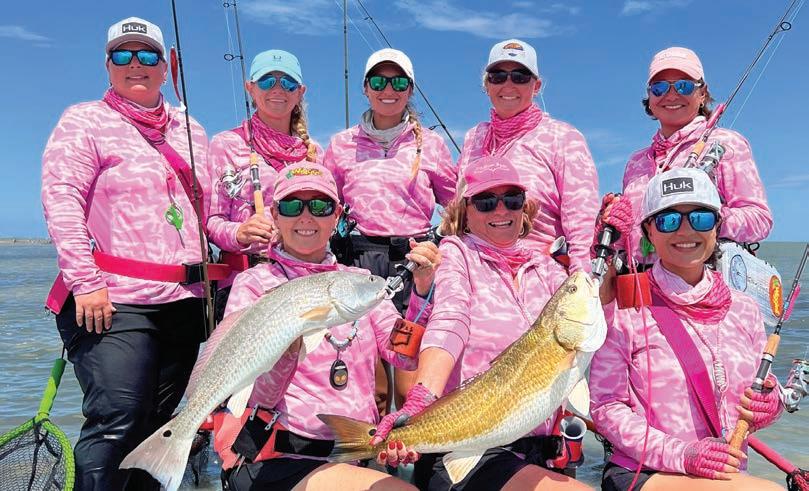





EDITOR AND PUBLISHER
Everett Johnson | Everett@tsfmag.com
VICE PRESIDENT
PRODUCTION & ADVERTISING DIRECTOR
Pam Johnson | Pam@tsfmag.com Office: 361-785-3420 Cell: 361-550-9918
ADVERTISER REPRESENTATIVES
Bart Manganiello | bartalm@optonline.net
Pam Johnson | pam@tsfmag.com Office 361-785-3420 Cell 361-550-9918
Wendy Nix | wendy@tsfmag.com Office 361-785-3420 Cell 210-413-7009
Everett Johnson | everett@tsfmag.com Office 361-785-3420 Cell 361-550-3637
CIRCULATION
SUBSCRIPTION – PRODUCT SALES
Vicky Morgenroth Store@tsfmag.com
DESIGN & LAYOUT Stephanie Boyd Artwork@tsfmag.com
SOCIAL MEDIA COORDINATOR
Bob Barrera
Texas Saltwater Fishing Magazine is published monthly.
Subscription Rates: One Year (Free Emag with Hard Copy)
Subscription $32.00 E-MAG (electronic version) is available for $15.00 per year. Order on-line: WWW.TSFMAG.COM
MAKE CHECKS PAYABLE TO: Texas Saltwater Fishing Magazine Attn: Subscriptions P.O. Box 429, Seadrift, Texas 77983
* Subscribers are responsible for submitting all address changes and renewals by the 10th of the prior month’s issue. Email store@tsfmag.com for all address changes or please call 361-785-3420 from 8am - 4:30pm. The U.S. Postal Service does not guarantee magazines will be forwarded.
HOW TO CONTACT TSFMAG:
PHONE: 361-785-3420 FAX: 361 792-4530
MAILING ADDRESS: P.O. Box 429, Seadrift, Texas 77983
PHYSICAL ADDRESS: 58 Fisherman’s Lane, Seadrift, TX 77983
WEB: www.TSFMAG.com
PHOTO GALLERY: photos@tsfmag.com
PRINTED IN THE USA.
POSTMASTER:



View The Video Open Camera & hover over QR Code. When link appears, tap to open in YouTube.
October Issue Highlights
Here we go, folks. Headed into the first full month of fall and I’m about as giddy as a kid at Christmas. The oppressive heat we’ve endured the past several months is mostly in the rearview, the coastal waters are cooling and the fish are going to be biting like a bunch of piranhas. What a great time to be a Texas coastal angler.
I’ve enjoyed some wonderful fishing days in October, from East Matagorda where we waded and drifted mid-bay reefs for trout, all the way down to Port Isabel’s South Bay where we picked our tides and slung topwaters for trophy snook. So many great days that I’d be hard-pressed to pick only one favorite. But if I did, it would likely include one of several we spent wading the Lower Laguna in the morning and then shooting white-wings along the Rio Grande in the afternoon. Fall classics–classically Texas!
October’s magic begins with the weather. A wading jacket sure feels good on the boat ride and during the morning’s first wade, but almost always ditched by mid-morning. Sliding over the gunwale at first light

gives you a chill, almost makes you wish you’d worn waders, but that disappears with the first good thump on your line.
The cooler weather is obviously enjoyed by the fish as much as the angler. I have to believe they get as tired of summer heat as we do. I can recall one very special morning at Port Mansfield; Joe Meyer, Lynn Smith, and I started at the Game Warden Shack and waded four hours until we could barely see the boat, catching fish non-stop. I sure was glad to bump into Mike McBride and hitch a ride back.
I’m certain we all have great memories of Octobers past; the best part is having the chance to live them all over again. Archery deer season is open and there was a day when I absolutely lived for that, so I understand the passion. And dove season is open all month; you can bet I’ll spend as much time in the fields with my dogs and hunting buddies as I can pry myself away from the water. I hope you can do the same.
October is also a great time for family outings. Fishing trips that include shoreline picnics make for some of the best family fun imaginable, and the kids will love you for it. They are only young and impressionable for a few short years, so be sure to make the most of them. My dear departed friend Dickie Colburn always ended his column in this magazine with…Take a Kid Fishing. Sage advice from a great man, I’d say.

































STORY BY STEVE HILLMAN
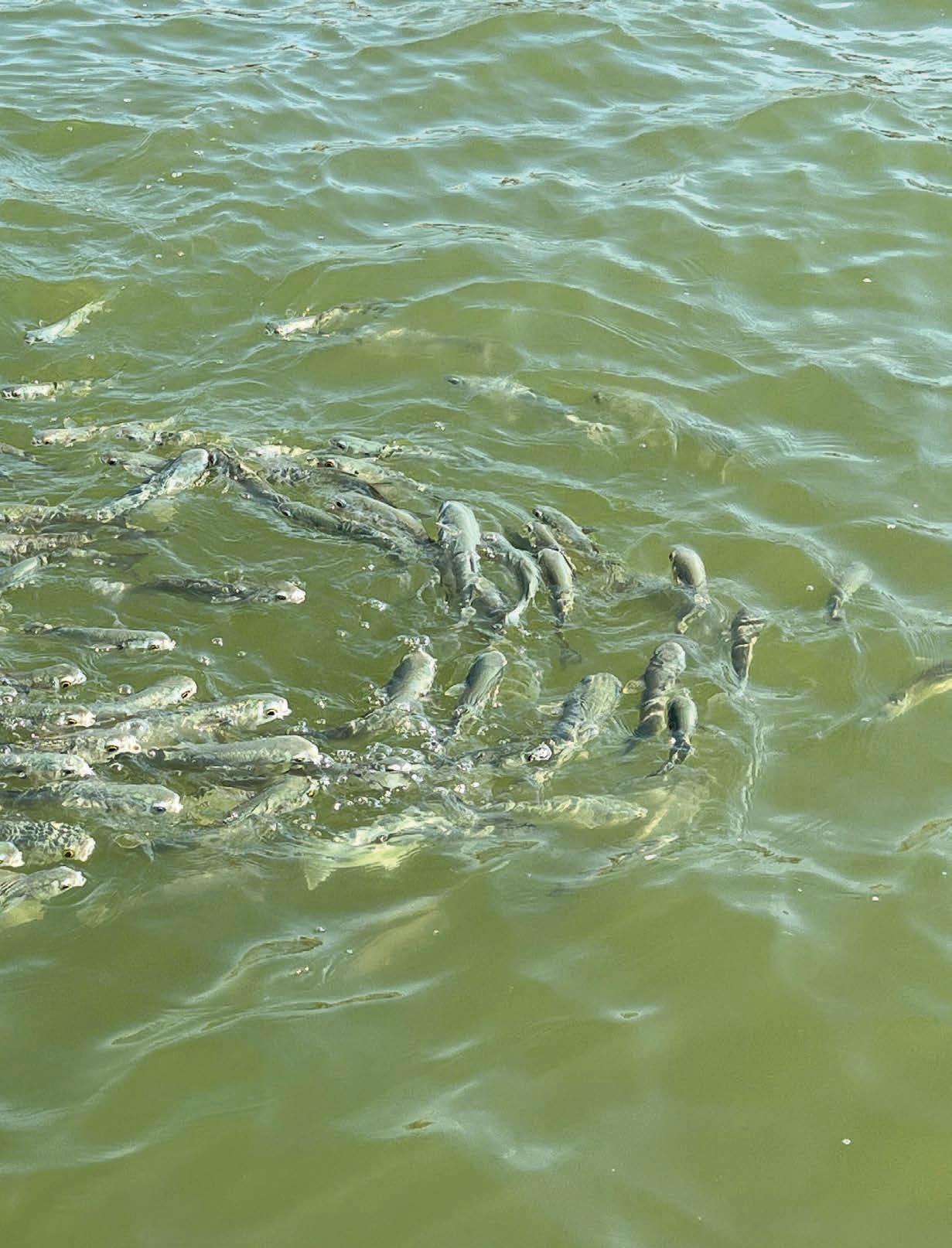
In a fishing world loaded with technological advancements designed to give us a superior edge when it comes to finding and tricking fish, I still find myself stuck in the dark ages. My side-scan sonar is my pair of prescription Costa sunglasses and my recollection of the last Google Earth image I studied on my computer. My Power-Pole is a 13-pound Danforth fluke anchor with 10 feet of 5/16 inch chain and 150 feet of 1/2 inch 8 plait nylon rope. My iPilot trolling motor control is my right hand as it twists the handle back and forth on this old transommounted Minn Kota. At least my 200 HP Suzuki will get this 1987 Boston Whaler up on plane and where we need to go in a hurry. You know, she’ll top out at about 44 mph with half a tank of gas and not too much ice in the cooler. Yep! She’s a real nose-bleeder. It seems boats were made just a tad heavier 40 years ago than they are today.

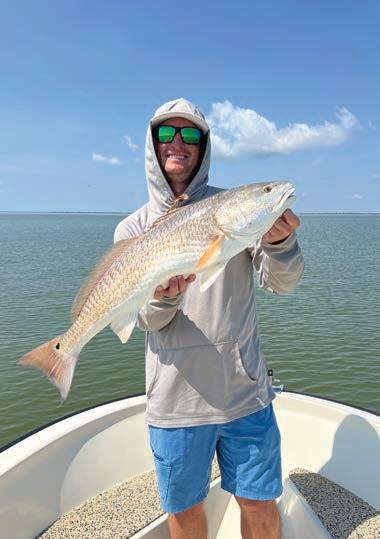
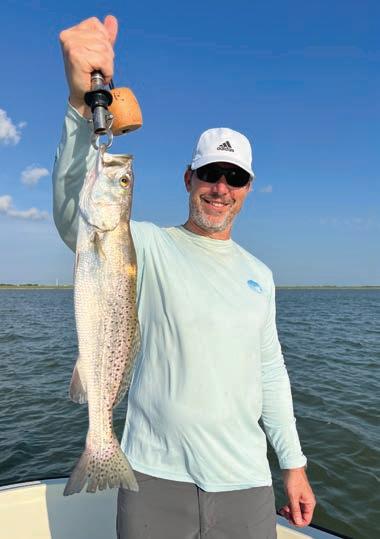
Growing up, my dad taught me how to find spots by triangulation. Landmarks such as a unique tree along a shoreline, a channel marker, or even a water tower would get us very close to our desired fishing spot. Once we thought we were on our spot we’d watch the rafts of mullet to determine where the highest points of a reef or other structure were located. We always knew that the trout and reds would gravitate toward the bait, so once we zoned in on the mullet we would look for the most nervous portions of the rafts. That was typically where our targeted fish were holding. A small slick or two popping along the edge of the bunched-up bait would further confirm the presence of trout or redfish.
All of that nervous bait told us that we needed to be chunking topwaters to start our morning. Our topwater of choice back then was a Rebel Jumpin’ Minnow. My favorite two colors (in this order) were the Silver/Black Back and Silver/Blue Back. The Bone color was right up there at the top of the list as well. When the topwater bite would fade we would switch over to 51 Series MirrOlures and Kelly Wigglers shrimp tails. My favorite color pattern MirrOlure was and still is the chartreuse back/gold side/ chartreuse belly – 51MRCH. If we were fishing in more than about 5 feet of water we’d chunk the same color but in a 52 Series. Our best color Kelly Wiggler shrimp tails were glow with chartreuse tail, red with white tail, and motor oil with fluorescent orange tail. God, please forgive us for the numbers of trout we killed on those baits! It’s amazing how much more
advanced our lures and equipment are these days compared to years ago. Heavy rods and reels have given way to ultra-lightweight, highmodulus, sensitive Waterloo Rods and long-distance casting Bates reels possessing the same feather-weight and sensitive characteristics of the rod on which they sit. Somewhat lackluster topwater plugs that seemed to be too heavy in the tail have now been replaced with lively, super buoyant, walk-the-dog style topwaters with the perfect high pitched rattles to entice even the most finicky of trout. MirrOlure has the perfect topwater for every condition. Period!

Soft plastics have more wiggle and more color varieties than ever before. The Saltwater Assassins that I use come in sizes and styles to fit every application. The Lit’l P&V works great when we need a small profile morsel that will cast a country mile, so we can trick those timid trout that seem to be in a negative feeding mode. The larger-bodied 6-inch Artemis Shad is a more buoyant paddletail soft plastic that will hover longer in the strike zone, making it extremely appealing to larger specks and redfish, especially during the cooler months of the year. The more traditional rattail and paddletail Assassin plastics cover every scenario in between. All of them come in more color varieties than I would have ever thought possible! Speaking of colors, I can’t count the number of times one of my clients has asked what my current favorite lure color might be. For the record, I don’t have a “favorite color” soft plastic. I look at the amount of available sunlight, water clarity, water

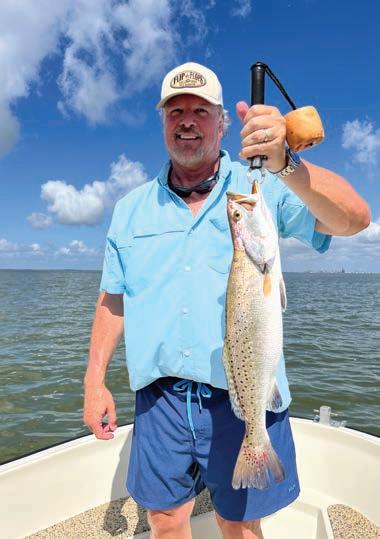

depth, and type of bottom habitat to help me decide what color gets threaded onto a lead head. In clear water with bright sunshine, glow/chartreuse and salt & pepper are hard to beat. This being said, if we’re fishing in clear water over patches of dark bottom grass, darker variations such as plum and Chicken-On-A-Chain usually work very well. Murky water typically warrants the use of darker colors such as Morning Glory, Red Shad, or Texas Roach. It’s all about shades and contrasts in a trout’s eyes.
Growing up, we strung our reels with Dacron or 20-pound monofilament line. The casting ability of such lines was less than great, to say the least, and the monofilament of that era had memory properties so prevalent that you had to change it out about every ten trips because it started looking and behaving like a Slinky. It’s amazing how we even felt the bites back then, much less landed anything. Now our braided lines have the strength needed to pull fish out of sticky structure while their smaller diameter enables stringing our reels with 150 yards, just in case we latch on to something like an oversized redfish, jack crevalle, or even a big snook, depending what part of the coast you’re fishing.
Oh, and thank God we had those little fold-up cards on the counters of the bait shops with tides and moon phases printed out on them. There were no smart phones, much less the interment, to provide us with the instant information that we have today. If we wanted to know the wind speed and direction at various locations in our area, we either had to watch the Weather Channel for local updates every eight

minutes or call the NOAA PORTS phone number.
Having all of these top-notch lures and gear at our disposal makes fishing that much easier than when we were growing up and doing it the hard way. It’s kind of like that baseball player who uses a much heavier bat in practice than he uses on game day. His swing eventually becomes faster, enabling him to hit pitches he otherwise may not have been able to hit. Another example would be someone who chooses to do math in their head rather than using a calculator. The sharpness and muscle memory developed by choosing the more difficult route makes us much more organically efficient. Then, when we are able to use the modern technology that’s at our disposal, we take our possibilities to another level.
My, oh, my but we’ve come a long way! I am so thankful to have grown up during the time that I did with the technologically challenged gear and resources (or lack thereof) we had. I truly believe it has made me a better fisherman because we had to learn the water by reading it and we were forced to find fish using our Godgiven senses without the help of state-of-the-art electronics or other modern day gadgets. It’s great to be able to use a GPS, but we should also know how to read a compass and triangulate our position.

Steve Hillman is a full-time fishing guide on his home waters of Galveston Bay. Steve fishes the entire Galveston Bay Complex, wading and drifting for trout, redfish, and flounder using artificial lures.
Phone 4 09-256-7937
Email captsteve@hillmanguideservice.com Web w ww.hillmanguideservice.com
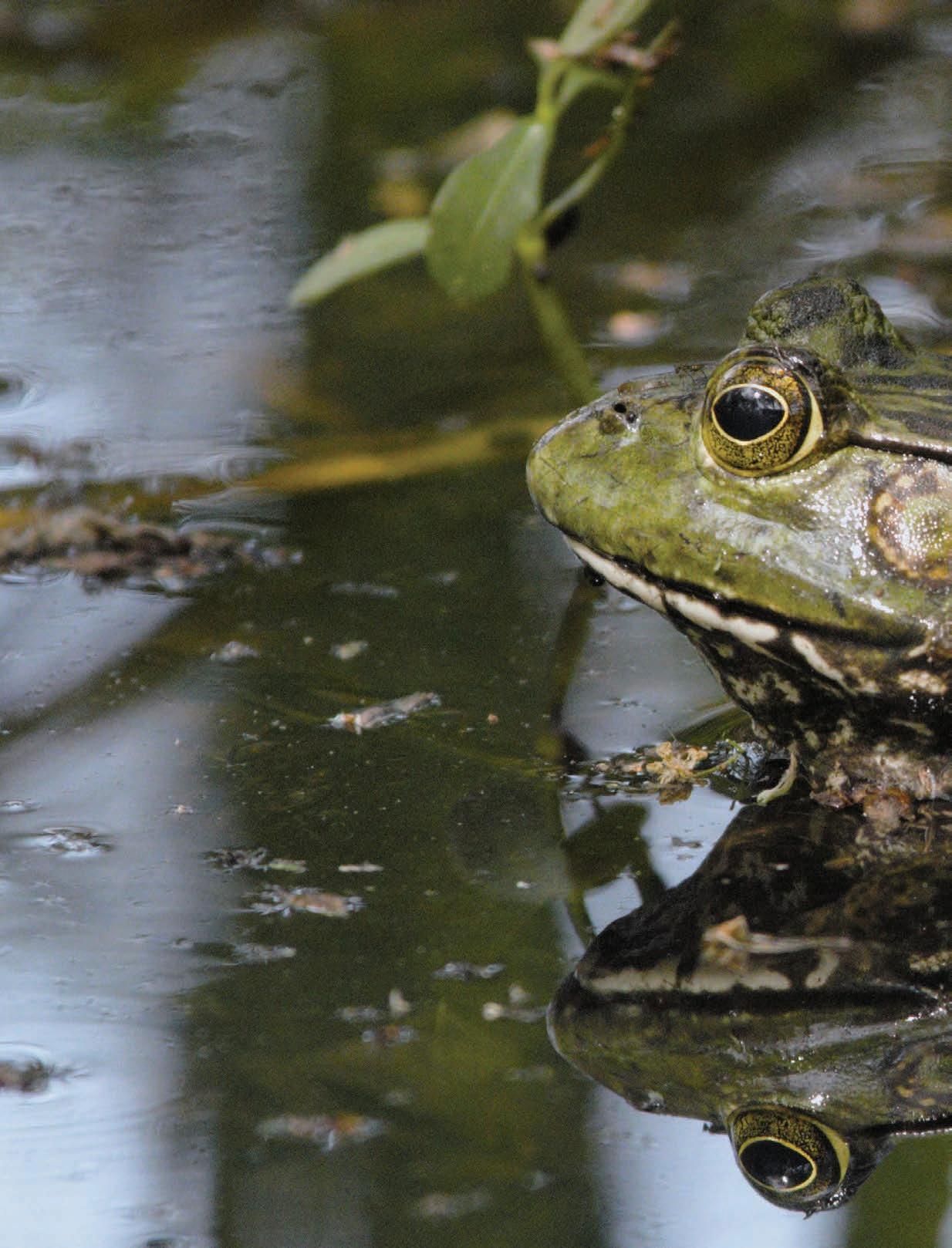
STORY BY KEVIN COCHRAN
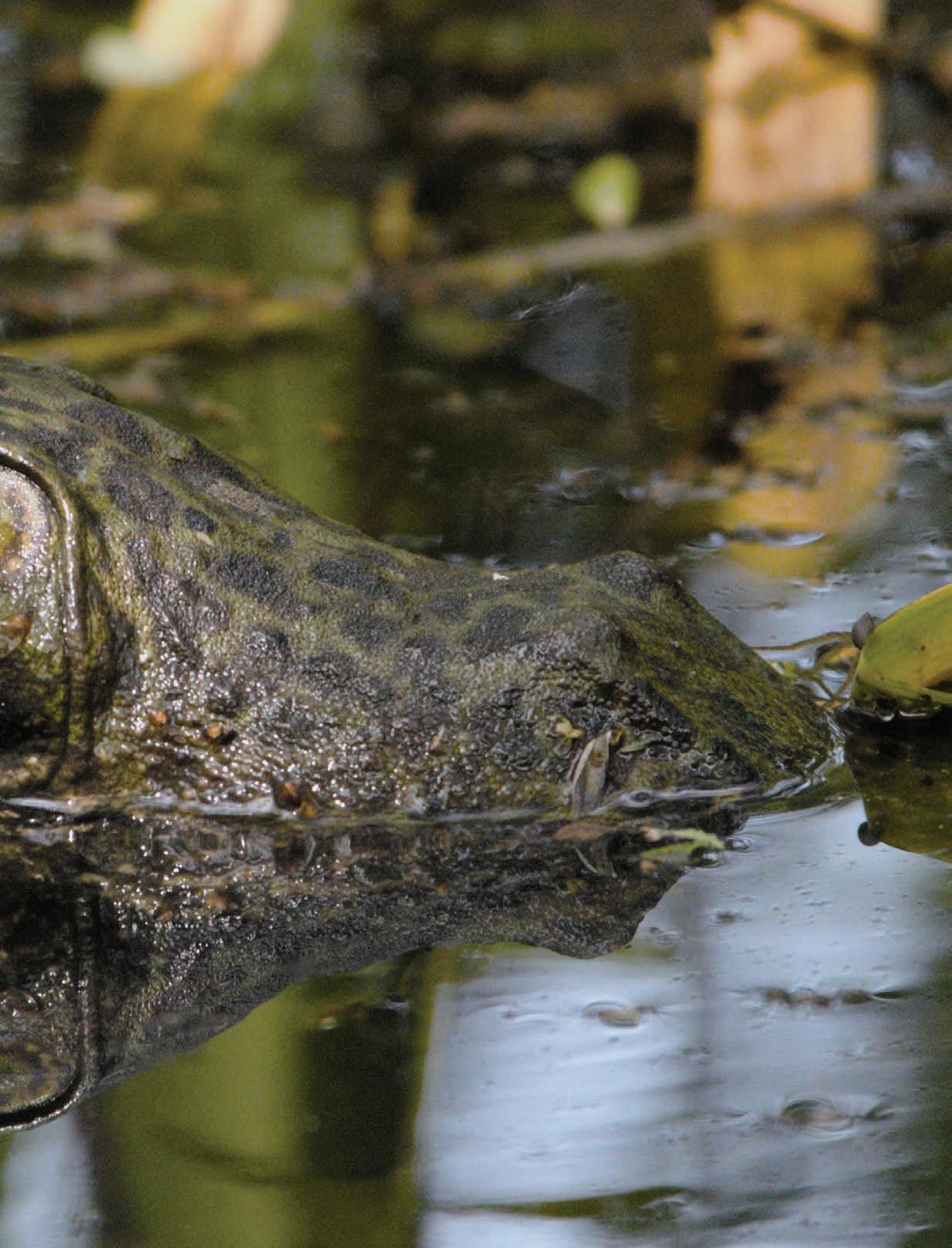
In Texas, October weather patterns create a complex puzzle for anglers to solve. For good reasons, many of us think of the Halloween month as one with mostly pleasant weather. But, in the first full autumn month, a wide gap can occur between the highest high and lowest low temperatures. This disparity, combined with frequent shifts in wind direction, can complicate things for coastal anglers in the Lone Star State.
In bays all over Texas, from Boca Chica to Sabine Pass, temperatures trend down in October. Generally, expected highs in the mid-80s occur daily at the start of the month, with lows averaging in the mid-70s. By the time the trick-or-treaters hit the streets, those values have declined by about 10°F. But the averages don’t tell the full story. On many days, especially south of the Coastal Bend, during the first half of the month, high temperatures above 90° occur. On the other hand, especially on the Upper Coast, during the second half of the month, low temperatures drop down into the 50s fairly often.
One would not expect the temperature to vary by so much in any specific place on any given day, since the lowest low temperatures often occur on days with lower high temperatures. Still, extreme variations in temperatures experienced all over Texas this month influence the efforts of anglers who target trout, redfish and flounder with artificial lures. Importantly, water temperatures rise and fall at a slower rate than air temperatures; October water temperatures in our state more closely resemble those prevalent in summer than in winter.
Potentially, this disparity between the way the air feels to us and the way the fish feel the weather changes in their wet world complicates matters further for anglers. Many folks react too quickly when the first nippy fronts of fall send air temperatures plummeting rapidly and make morning boat rides to fishing holes feel chilly. It’s easy to mistakenly think the fish will react to these changes in the same way they will later, after water temperatures fall into the 50s on a regular basis.
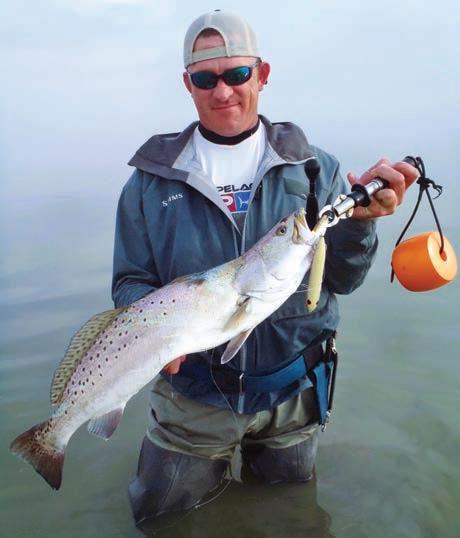
Generally, water temperatures in Texas bays and coastal waterways this month make fish feel comfortable, not likely to seek deeper or shallower water to cool off or warm up. When fish feel comfortable in water of moderate temperatures, predicting their specific locations becomes more difficult than when they feel stressed by either extremely hot or cold water. Consequently, anglers attempting to solve the October puzzle must first make good decisions about where to make their efforts, meaning whether to work backwater areas and places near marshes in the upper regions of the bays, to fish areas within the main basins of the bays, or to try places closer to passes which connect the bays to the Gulf.
When making these choices, an angler should consider the depth of water in the place and in nearby places. Extremely variable tide levels in Texas’ bays this month can complicate this, adding another element of complexity to the puzzle. On average, bull tides, meaning extremely high ones, dominate our coastal waters during the weeks following the autumnal equinox, which occurs about two-thirds of the way through September. Bull tides typically make fishing for trout, reds and flounder tougher, because they tend to spread fish out over larger areas, including vast, shallow parts of our bays which become void of fish on extremely low tides.
In South Texas, tide level plays a more important role than tide movement in many places. In Baffin Bay, for instance, tides normally don’t move much on a
daily basis. On the Upper Coast, in bays like Galveston Bay and Sabine Lake, tides roll with much greater intensity, and paying attention to key parts of the tide cycle plays a critical role in generating and executing successful plans. In any part of the state, strong winds can and will affect tide levels. Generally, strong northwest winds blow water out of our bays, and stout easterly winds blow water into them. These facts affect anglers’ decisions about where to fish during October. Fishing well into backwater areas when tides stand at extremely high levels makes sense, as does moving toward the basins and passes when tides fall out. Partly, this rings true because of the timing of a significant natural event which occurs every fall in our estuaries. Many millions of organisms migrate from the bays to the open ocean this time of year, motivated by phenomena like strong frontal passages and tide movements. When cold fronts send water gushing out of shallow marshes and into the open basins of our bays, shrimp and various kinds of small fish begin heading out of their nurseries, on their way to the depths of the Gulf of Mexico. When this happens, these prey species face a daunting gauntlet. Trout, redfish, flounder and other predators intercept as many of the migrants as they can, gorging on a rich, temporary feast. Flocks of Laughing Gulls, terns and other birds play a role in the dramatic scenario too, hovering, screeching, diving and claiming meals driven through the water’s surface to them by the snapping jaws of prowling schools of fish. Working birds simplify things for coastal anglers who prioritize fast action and catching lots of trout over catching big ones, especially while north winds reduce water temperatures and lower tide levels, setting the mechanics of the migrations in motion.

Typically, while numerous flocks of gulls hover over migrating shrimp under attack from schools of trout and redfish in the basins of our bays, the bite in the shallows on nearby shorelines has tremendous potential, too. Anglers who key on popping slicks and herds of nervous mullet often take advantage of situations like those by ignoring the gulls and the people in boats chasing after them and wading shallow flats and reefs, targeting the bigger trout in the area. Big trout like to eat other fish, and they’re not often caught by anglers tossing lures under birds lurking over schools of aggressive medium-sized trout. Trophy trout hunters know this; they prefer wading and working their lures around frantic mullet more than under squawking gulls. When choosing which lures to throw

Now stronger and even more durable - the PENN® Battle® IV continues its tradition of being the workhorse of saltwater spinning reels. Newly upgraded with the Hydro Armor™ System and additional seals, the Battle IV is even more protected against saltwater intrusion and corrosion. An updated design eliminates through-holes in the spool body to further protect the reel from unwanted debris infiltrating its body and handle. Available in nine sizes and select high speed models, you can count on the Battle IV to have your back in any fight. PENN. LET THE BATTLE BEGIN™.

during October, coastal anglers in Texas face another potentially confounding puzzle. Floating plugs work well this month for folks targeting both trout and redfish. Often, casting topwaters under working birds works wonders, even while north winds still whistle after the passage of a cold front. So, topwater lures do work well this month in post-front conditions, especially when a front passes without immediately generating crystal clear skies. Some of the best conditions for throwing floating plugs this month coincide with stormy, cool, cloudy, post-front weather.
Topwaters also draw consistent strikes from trout and reds this time of year on mornings when relatively hot, calm conditions similar to those prevalent throughout the previous three months occur. This is part of what makes the October puzzle difficult to solve. Earning blow ups under blue skies early on warm mornings this time of year proves easy for people who know how to walk the dog, but on other calm, clear days, floating plugs become nearly useless to anglers targeting trout and reds in Texas bays.
Anyone with more than a few days spent on the water in the weeks leading up to Halloween has likely experienced the most frustrating aspect of fall fishing in our state. On the most beautiful days, the halcyon days, when fair skies and cool, crisp air welcome us out onto the water, earning strikes can become every bit as tough as the weather is pretty. When bright skies shine over slick-calm, cooling bays, savvy anglers react in two basic ways; they abandon topwaters for lures which work closer to the bottom and offer smaller lures to the fish, acknowledging the inherent difficulty of getting trout, reds and flounder to bite in pristine conditions.
Many would cite the effects of high pressure on halcyon days as the element responsible for confounding the efforts of anglers. I suspect


the pressure has little to do with the finicky attitudes exhibited by predatory fish in such situations. Days with cloudless skies, silent winds and a pleasant chill in the air often occur immediately after the winds of passing cold fronts fizzle and die. Significantly, predatory fish feed aggressively, gorging predictably when the fronts hit and for a while after they pass.
After feverishly feeding fish fill their bellies, they will need to rest and digest what they’ve eaten. Often, they’re doing so on the very days many inexperienced anglers would identify as ideal for heading out in a boat to fish the coastal waters, setting up disappointment for those who don’t understand what’s happening. Regardless of the reasons or the explanations, smart lure-chunkers anticipate difficulties when they choose to fish on the days with the prettiest weather this month, mostly using small soft plastics and spoons to target trout, reds and flounder and presenting the lures in creative, sometimes wildly erratic ways.
Successfully making these kinds of adjustments can seem like a form of fishing magic to some people, at some times. Anglers who consistently catch fish at a fast clip this time of year can appear to rely on mysterious instincts. This appearance is an illusion, though. Anglers who learn to consistently solve this month’s puzzle rely on knowledge earned through the proper analysis of repeated experiences, not on nebulous wizardry. In this way, coastal fishing for lure-chunkers in the Lone Star State in October is exactly the same as in the other eleven months.

Kevin Cochran is a long-time fishing guide at Corpus Christi (Padre Island), TX. Kevin is a speckled trout fanatic and has created several books and dvds on the subject.
Kevin’s home waters stretch from Corpus Christi Bay to the Land Cut.
T ROUT TRACKER GUIDE SERVICE
Phone 361-688-3714
Email kevincochran404@yahoo.com Web www.captainkevblogs.com














Pedal Palacios Ride | Start your day with an early ride!












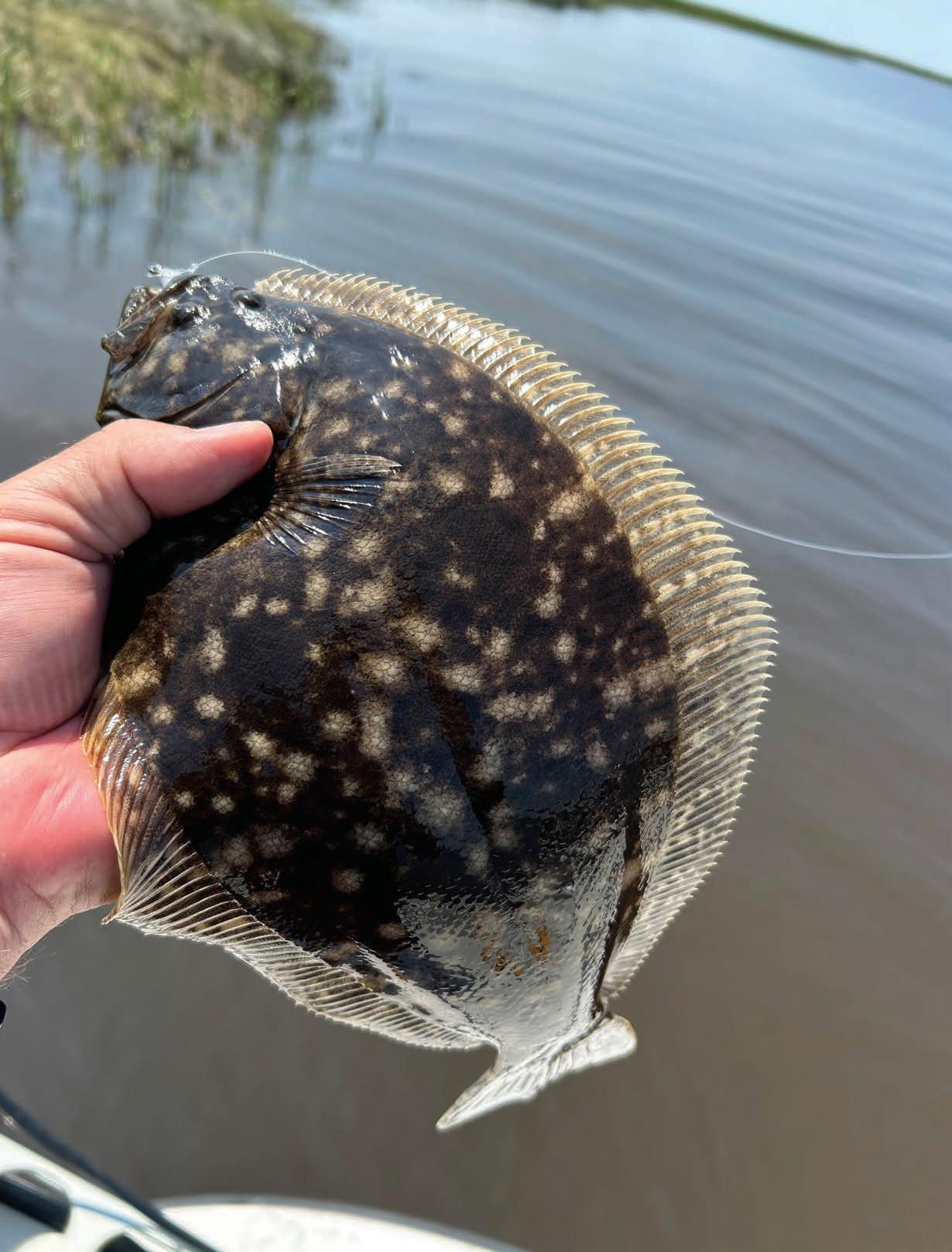
My wife looked across the kitchen at me with a rather confused expression as I lifted the page on the calendar and broke into my best rendition of the classic children’s song, “If you’re happy and you know it,” as I pointed to the month of October. This is easily one of my favorite times of the year as it seems like just about every conceivable pattern a fisherman could imagine comes into play and it’s nearly impossible to make a bad choice. Couple all this enthusiasm about fishing with the fact that hunting season is right around the corner. Hundreddegree days are in the rear-view mirror as the first decent cool front makes an appearance and it all makes sense why the excitement levels are so high.
With this increased level of excitement also comes a dramatically increased level of traffic on the water as seemingly everyone with a boat tries to take advantage of the perfect conditions. Extra helpings of patience and common sense are a must as fishermen of all skill levels converge on the water. I enjoy seeing some of the different groups of anglers that suddenly show up in October. Perhaps my favorite group are the “dyed in the wool” freshwater guys with their shiny NASCAR-looking boats decked out with enough sonar and GPS screens to land a space shuttle. These are the same guys who vow to never put their boats in saltwater until they finally go saltwater fishing and see what it’s like to actually have a fish pull some drag.
Once October passes the crowds begin to thin out as cooler temps will discourage most of the fair-weather folks, while many others will turn their attention to hunting season. The folks left on the water at that time are the true diehards who will reap the rewards of their efforts as the fishing hits high gear. There are few feelings like scanning the open lake and seeing multiple sets of birds working over hungry fish with not another boat in sight; it’s one of those rare occurrences that few get to experience.
Now if you want to navigate October, there are plenty of options to choose from and none of them are bad. Obviously chasing schooling fish under the birds is at the top of the list for most folks because it’s easy and fast paced. Soft plastics on jigheads is the standard weapon of choice for those looking for sheer numbers of fish. The single hook approach makes releasing fish much easier and allows you an opportunity to get back to fishing quicker than dealing with treble hooks that seemingly find anything and everything possible to hang on. The single also makes for a much safer environment in the boat when the chaos gets cranked up. Nothing puts a screeching halt to a good day on the water like burying a treble hook in your hand or pinning one to the back of your fishing partner’s head.

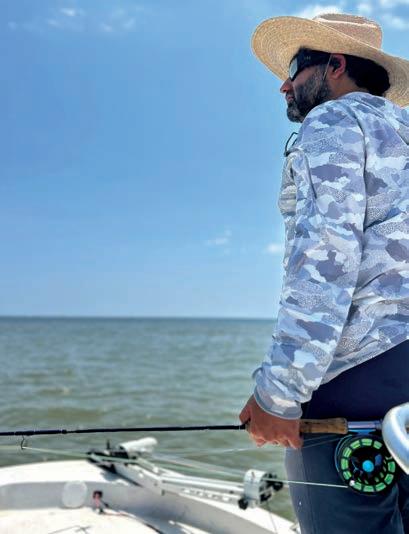
If you are looking for bigger fish under the birds you can always tie on a topwater and look for a better bite. The smaller fish will peck at the plug, sometimes bouncing it into the air like a volleyball until a better fish comes along and finishes the job. Another method for locating better fish is to go to a heavier jighead and get below the schoolies, where the bigger fish are cleaning up the mess. It always amazes me how you can catch small trout cast after cast near the surface, but once you allow that lure to get down towards the bottom and use a slower retrieve the bigger fish, especially redfish, magically appear.
If chasing the birds and dealing with the crowds seems less than appealing, don’t worry, there are plenty of other options to choose from. The flounder should begin to stack up in preparation for their annual spawning migration to the gulf, so taking advantage of that opportunity is high on many anglers lists. Still other folks will take advantage of the deep water bite in the rivers and along the channels as fish become increasingly more active with the cooler water temperatures. Live shad or mullet fished on a Carolina rig along the breaks will produce some great fish at this time of the year. Oversized reds and quality trout, along with an occasional shark or jack crevalle, have been known to show up for the folks who fish live bait during fall, so be prepared for the potential of a really big bite. So far this year I have seen some mammoth-sized jacks in the lake and I can only imagine what’s going to be prowling around in the deeper water this month.
Another pattern that seems to be a constant for us here on Sabine

View The Video Open Camera and hover over QR Code. When link appears at top of screen tap to open in YouTube.

and Calcasieu in October is chasing the big schools of redfish that gather up during the middle of the day. If you happen to catch one of those light wind days and are willing to burn a little gas, you can find these fish blowing holes in the water while herding shrimp or pogies. These big schools seem to be out in the middle of the lake where there is little traffic and plenty of opportunity. Many times there may be only one or two lone gulls shadowing the school so don’t be quick to pass up one bird that looks like its interested in something because you may pass up an entire school of fish. The great thing about finding these schools out in the middle of the lake with only a few birds or none at all is that you won’t attract any attention from other anglers fishing the “bent pole” pattern. These schools, once they start feeding, tend to stay up for long periods of time, so it’s not uncommon to stick with them for an hour or more if you are lucky. Keep your binoculars handy and don’t be afraid to go check out anything that looks fishy. October is a great month with plenty of promise and one that I personally look forward to. Everything seems to come together during this time of the year and it really makes getting outdoors a much more pleasant experience. Both the variety and quantity of fishing opportunities makes this a perfect month to share the sport with a new angler, especially kids, because there is always something biting. Remember, be patient this month, and enjoy it all.

Chuck fishes Sabine and Calcasieu Lakes from his home in Orange, TX. His specialties are light tackle and fly fishing for trout, reds, and flounder.
Phone 409-697-6111
Email wakesndrakes@yahoo.com Website wakesndrakes.com


STORY BY JOE RICHARD

It’s been a while since I fished the Gulf of Mexico alone but after a recent day out there, I reflected on the pros and cons of solitary fishing and vowed to do it more often.
Thanks to my patient and saintly wife Amy, who also loves fishing and has won tournaments, I have a reliable fishing partner. However, when she’s busy in the studio, I usually find a buddy to join me for some guy time. On this latest trip, I went solo.
The first part of the day was a good reminder of the numerous reasons why it’s nice to have a fishing partner, beginning with launching the boat—especially on weekends when there are 30 cars in line and you’re blocking the ramp. (Best aim for the weekdays, when ramp traffic is slow.)
Alone, anchoring can also be tricky. If you anchor the old-fashioned way (at the bow), you have to be quick and nimble-footed enough not to trip over something during anchor duties. This was underscored recently when, a few hours after launching, a fast-moving thunderstorm with rain and lightning had me seeking refuge under a bridge with 7-foot clearance. Nice and snug under there, but wind gusts of 30 knots soon hit and the anchor began to drag. It was run to the bow to pull anchor and then back to the tiller to goose the boat away from pilings, before re-anchoring out in the rain and then paying out enough rope to keep the boat under the bridge. There was no room for error.

When the rain backed off a few hundred yards, it was pull anchor again and bolt for the boat ramp, tying to the dock in choppy water. The car was only 40 yards away and it was time for lunch.
Hours later, anchored under blue skies and landing eleven nice redfish in ice cream conditions, I pondered the positive aspects of fishing solo.
From a personal perspective, being alone with my thoughts—away from the clamber of social media and city life in general—was good therapy. Similar to “forest bathing” (which has nothing to do with soap and water, but hiking), recent studies have shown that being in the elements is a good way to slow down, letting the wind, water and tide reconnect with our senses. Which may help explain why, when fishing solo, I’ve noticed that new fishing ideas and techniques

surface more readily.
Fishing alone allows me to move the boat to a new spot or run offshore a couple miles without discussion. Without time restraints, either. There’s nothing more annoying than fishing with someone who waits until you’ve made that first cast before announcing he “promised the wife” we’d get back by midday. (I had a friend who did that often and I’m pretty sure it wasn’t his wife he was rushing home to.) When alone, there’s also no one to spit tobacco juice, light up another cigarette, vape a big cloud of smoke while you’re driving, or blow their nose, claiming they’re “almost over” that latest Covid variant.
Another reason: My gear is exactly where it’s supposed to be and as minimal as possible—no extra clutter from an extra cooler or a guest
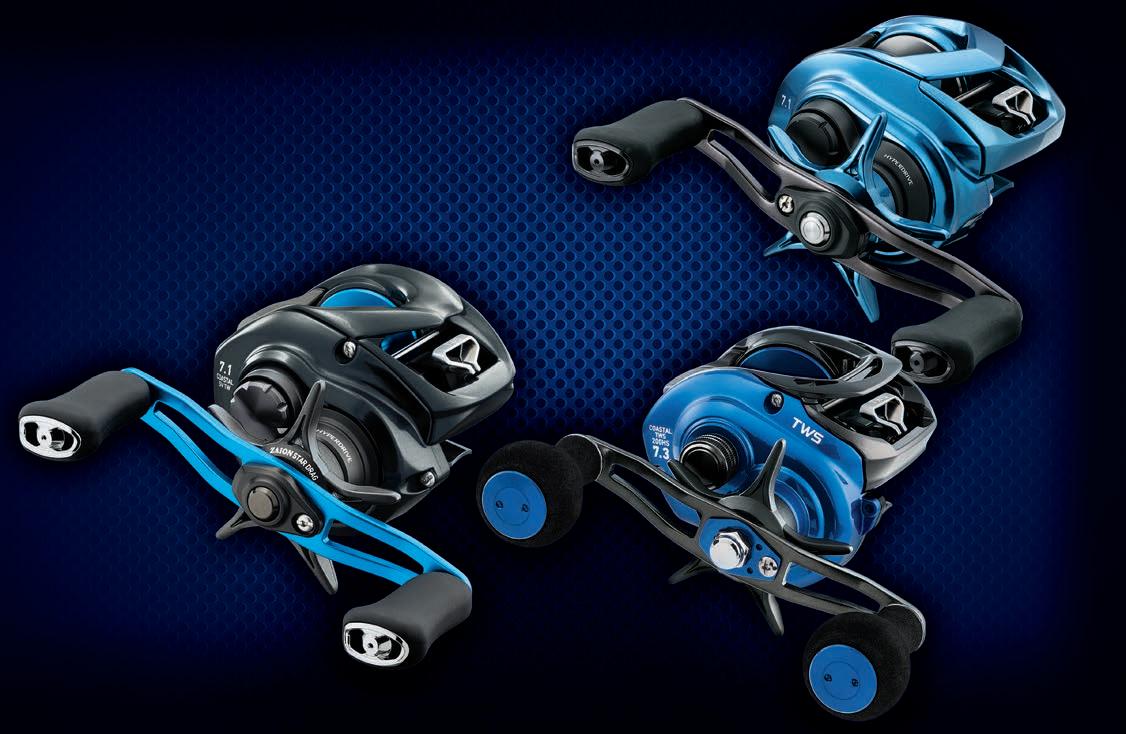

tackle box with six trays or four extra rods. Just exactly what I need.
With all of that said, boating novices should plan to bring a partner until they really get the hang of things. Two pairs of eyes are always better than one when it comes to navigating, troubleshooting, watching for hazards or spotting fish.
The same is true for wade fishing alone, which is contemplative and pleasant. When fishing the surf, it’s a good idea to stay within yelling distance of other waders. There are hazards out there and you might need help. Unpleasant scenarios include sharks tugging on your stringer, unseen jellyfish with a powerful sting, stepping off into a deep channel
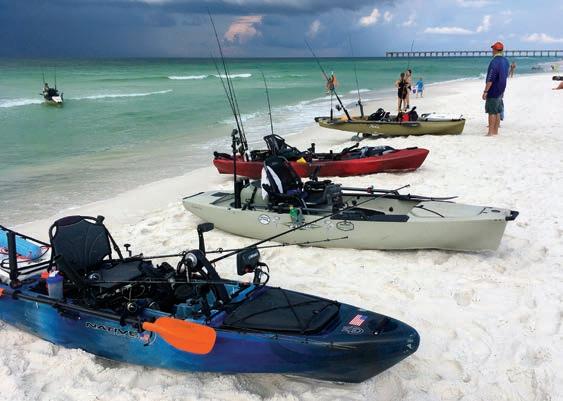
and getting swept offshore on an outgoing tide, or getting snagged by a treble hook and unable to swim back from the third sandbar.
On the boat, the most important thing to remember when alone is to wear a kill-switch when driving, in case you topple overboard. This doesn’t only happen to “old guys” who stroke out. Wearing a self-inflating life vest that inflates on contact with water is obviously a good idea and can be a life-saver. And if you fall overboard while relieving yourself and no dive ladder, who you gonna call? Boats are sometimes found running in tight circles, proof that someone passed out and toppled overboard, sadly found days later. Bring that P-bucket and stay in the boat.
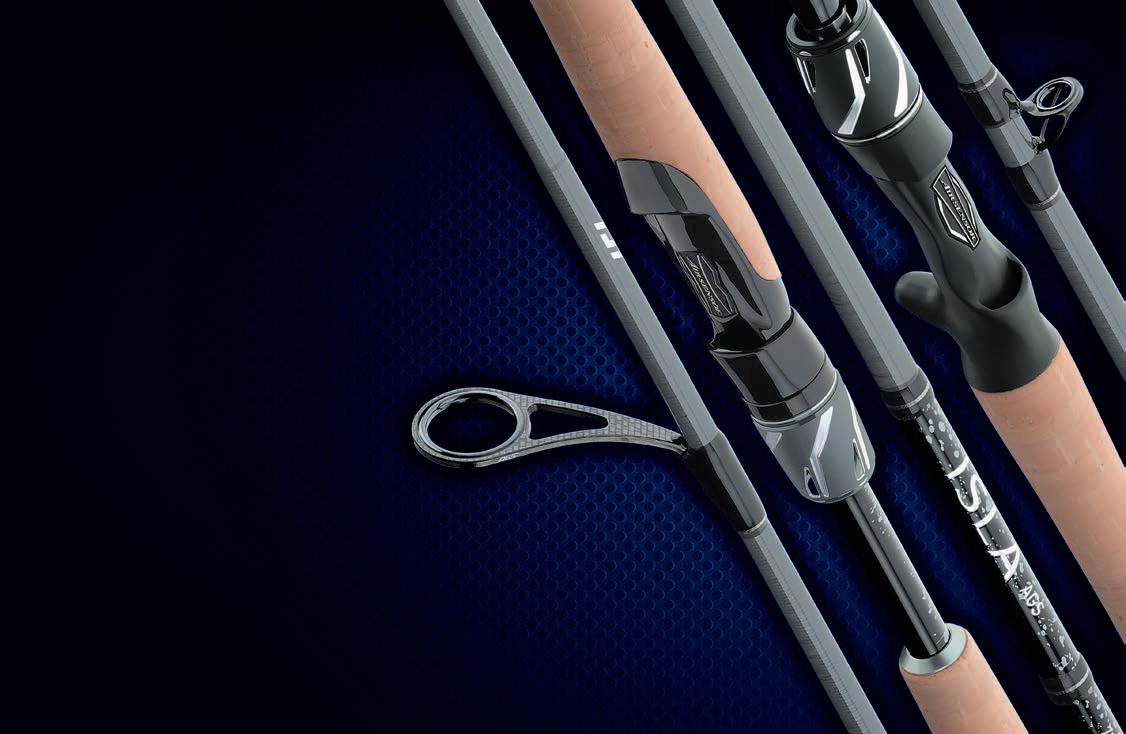
LOADED WITH FEATURES
Air Guide System (AGS) creates a more Rigid and Sensitive Guide at a substantially Reduced Weight
Daiwa’s exclusive NANOPLUS
Graphite construction
Daiwa’s exclusive Custom AirSensor Reel Seats
BRAIDING-X Carbon Fiber
Curious what others think of solo fishing, I asked a couple of buddies to weigh in on the subject. They’re both kayakers, who obviously fish alone.
Al Clements, 77 years old, says he’s adopted a hybrid approach. “Do I fish alone? Yes. Launch alone? No.”
Al uses a tricked-out kayak that is heavy with gear. Without a trailer, he makes sure he has another kayak buddy nearby and they launch and meet up again at the ramp. “You should always have someone you can call,” he says. Instead of cell phones with unreliable service, he uses a handheld VHF radio.
“I used to launch and fish alone, but with today’s extra equipment options (he uses side-scan sonar and a 3-horse electric motor), my kayak is too heavy to launch alone. I always have a serious kayaker or two who wants to go. We usually fish out of sight of one another, and don’t get in each other’s way. We don’t even see each other, but I can call my buddy a mile away with the radio and let them know what’s going on, what the fish are biting on, water temp and clarity, etc.
“I love fishing alone. Nobody tells me what to use. You know what you’re doing and why and don’t have to explain. It’s quiet; I can listen to nature. No radio, no talking, nothing. I don’t have to entertain anyone or worry if they’re comfortable.
“If someone calls with a problem, I’ll answer. (Recently he brought extra water to a fishing buddy who didn’t bring enough.) I’m a fishing nerd and take it seriously. I stay out as long as I want. Gone from the house from dark to dark. But I have a lot of fun, meeting new people at the marina after cleaning fish. I give them advice where the fish were biting today, but tell them I can’t predict tomorrow.“
Another fishing buddy, John Byatt, fishes a lighter low-tech kayak by

“We contracted the construction of the TSFMag office building with Farrell Jackson. Jackson also built my son’s bay house here in Seadrift. We were completely satisfied with both projects…a professional and trustworthy contractor.” ~ Everett Johnson | Editor/Publisher, TSF Mag
himself, frequenting shallow water shorelines and out a ways, and he’s had some real workouts when the wind shifted. He wears a self-inflating vest and recently bought a small 6-watt VHF radio for safety. Says he can hear other boats talking back and forth.
“Sometimes you just want to go exploring without the perceived pressure of catching fish,” says Byatt. “I can try a new technique and if it doesn’t work out, there are no witnesses. Fishing for me has to be enjoyable. It’s nice fishing with people you get along with; there’s nothing worse than fishing with someone who’s grating on the nerves. Also, sometimes I wake up in the morning and say, ‘You know what, I’m going fishing today.’ When you don’t have to organize anything but yourself, it’s nice.”
While our approaches to solitary fishing may be different, we do agree on one thing: be sure to provide a float plan with someone onshore, no matter the size of your boat crew.
Joe Richard has fished the Gulf since 1967, starting out of Port Arthur, but his adventures have taken him up and down the entire coast. He was the editor of Tide magazine for eight years, and later Florida Sportsman’s book and assistant magazine editor. He began guiding out of Port O’Connor in 1994. His specialty is big kingfish, and his latest book is The Kingfish Bible, New Revelations. Available at Seafavorites.com









STORY BY DR . LEE FUIMAN, AMANDA JACOBY, & SALLY PALMER

Stock enhancement – supplementing natural populations by releasing large numbers of hatchery-produced fish – is one of the tools that fishery managers use to maintain healthy fisheries. Texas Parks and Wildlife Department (TPWD) has been at it for decades, and they recently celebrated the release of their one billionth fish. The effectiveness of stock enhancement depends on releasing a lot of fish and on their survival after release. In response to a widespread decline in Southern Flounder populations throughout the Gulf of Mexico and southeastern United States, several states have begun stock enhancement programs for Southern Flounder. However, hatchery production methods for flounder are not as well established as they are for other species, such as red drum. Because of this, just producing large numbers of flounder for release is challenging. But, another problem is that a large portion of hatchery-produced fish lack almost all coloration on their eyed side. These malpigmented fish, called pseudo-albino, are almost entirely white. Since the eyedside pigmentation allows flounders to camouflage, it is essential for their survival.
The first two parts of this series of articles explained how researchers at the University of Texas Marine Science Institute’s Fisheries and Mariculture Laboratory (FAML) conducted experiments on Southern Flounder and California Halibut and applied the tools of molecular biology to gain a better understanding of malpigmentation in flatfishes. The results of that research showed that the reason pseudo-albino flounder are mostly white is not because the pigment cells on the eyed side of the fish lack pigment, but rather, the pigment cells are not there. The researchers found differences in the activity of three genes in Southern Flounder that were associated with malpigmentation rate (the percentage of fish in a spawn that become pseudo-albino). One gene, in particular, had the same relationship with malpigmentation rate in California Halibut. That gene is known to play a key role in creating pigment cells during development. Importantly, that relationship between gene activity and malpigmentation rate occurs when flounder and halibut are 5 to 6 weeks old, weeks before malpigmentation can be observed. This gene could potentially be used to screen batches of flounder to determine whether the malpigmentation rate for a particular spawn will be so
high that it might not be worth rearing the fish any further.
Although having an early detection system for malpigmentation could be useful, it would be better to know how to reduce or prevent malpigmentation altogether. With that in mind, the researchers noticed that the incidence of malpigmentation was consistently higher in fish reared in the TPWD hatchery compared to the FAML laboratory. On average 30% of hatchery fish were pseudo-albinos, while the laboratory averaged 5%. Dr. Lee Fuiman and Cynthia Faulk sat down with TPWD’s Dr. Christopher Mace and Ashley Fincannon and put together a list of the differences in how the two facilities reared flounder, thinking that one or more of these differences might be responsible for the discrepancy in malpigmentation rates. Two things piqued their interest: differences in food and differences in lighting. They agreed to start by exploring the effect of the food.



Almost all marine fish are very small when they start feeding and they will not eat dry food. They will only eat live animals that are small enough to consume and easy enough to catch. And, they need to be fed a lot because young fish have a very high metabolism. So, hatcheries must produce millions of live, microscopic animals every day. The first food marine fish larvae receive is rotifers – tiny, soft-bodied animals. Rotifers are not very nutritious, but they can be immersed in an enrichment product, which the rotifers consume, and that fortifies them with fatty acids, amino acids, and minerals before being fed to the fish. When flounder are about 3 weeks old, they can eat slightly larger animals, and brine shrimp are the convenient choice. Brine shrimp can be purchased as dry cysts (eggs) and hatched out on demand by placing them in seawater for a day. Newly hatched brine shrimp have a yolk sac that provides nutrition for the brine shrimp and for a fish that eats it. But, the nutritional value of the yolk varies and the brine shrimp use up the yolk quickly, so the nutritional value of brine shrimp to the fish diminishes over time. In some hatchery protocols, brine shrimp are enriched in the same way as rotifers, but the process of enriching brine shrimp adds significantly to an already expensive and labor intensive fish production operation. The FAML protocol for rearing flounder uses enriched brine shrimp, but the protocol used by the TPWD hatchery feeds newly hatched brine shrimp to flounder. Could this difference in larval diet explain the large difference in malpigmentation rates between FAML and TPWD? The researchers conducted an experiment in the CCA Texas Laboratory for Marine Larviculture at FAML to determine whether the differences in malpigmentation rates between the two facilities were due to the


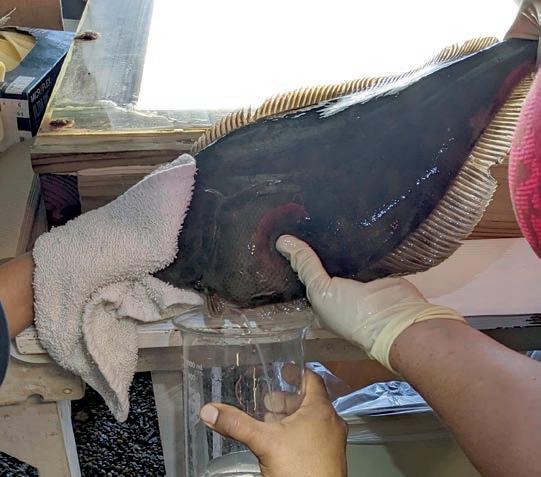

enrichment of the brine shrimp.
The research team strip-spawned five female flounder from the broodstock at FAML. They took 10,000 eggs from a single spawn and put half the eggs into one rearing tank and the other half into a different rearing tank. They repeated this for the other four spawns. The eggs were incubated and all 10 tanks of fish were reared identically, with one exception. Starting about three weeks after hatching, one tank of flounder from each spawn was fed newly hatched brine shrimp (the hatchery diet) and the other tank from each spawn was fed enriched brine shrimp (the laboratory diet). Eight weeks after hatching, 100 fish were removed from each tank and the normal and malpigmented fish were counted to determine the malpigmentation rate.
The results showed a clear improvement in malpigmentation rate when fish were fed enriched brine shrimp. For example, one spawn
had 42% pseudo-albino fish when they were fed newly hatched brine shrimp but only 6% pseudo-albino fish when they were fed the enriched food. For all five spawns, the average malpigmentation rate decreased from 18% to 4% due to the enriched diet.
“The research has provided compelling evidence for our stocking centers to try using enriched foods. While it adds time and resources, if this step can reduce malpigmentation, it’ll drastically improve the success of the released fingerlings,” said Ashley Fincannon, CCA/CPL Marine Development Center Hatchery Manager. “TPWD is committed to ensuring the success and sustainment of the Southern Flounder population in Texas and ensuring there’s plenty of fish for future generations.”

The next step in this research collaboration is to determine whether the same degree of improvement in flounder pigmentation that was observed in the lab happens when the enriched diet is applied in hatcheryscale production. The CCA/CPL Marine Development Center in Corpus Christi is planning to feed enriched brine shrimp to larval flounder this fall, and FAML staff will determine the malpigmentation rates in those production systems to see how well the laboratory results translate to the real world. Partnerships like that of FAML and TPWD provide a great collaboration to help sustain fish populations long into the future.
The research described here was made possible by funding from the Texas Legislature allocated to the Texas Gulf Coast Research Center at the University of Texas Marine Science Institute.
Dr. Lee A. Fuiman is a Professor at The University of Texas Marine Science Institute in Port Aransas and Director of the Fisheries and Mariculture Laboratory.

Boy, this past month has been a hot one. Water temperatures are running 87-88° at this writing, driven daily by mid- to upper-90° daytime air temperatures. Tides are low and winds are light, so there is not much water movement apart from the relatively weak tides. As is always the case, I am focused daily on areas with an abundance of bait present over the primary structure available in the areas I am fishing.
During summer’s dog days and into early fall, I move from Corpus Christi Bay to Aransas, Copano, St. Charles, Mesquite, and the southern portions of San Antonio Bay. I don’t mind burning gas and have always felt that I needed to be constantly searching for the next hot area. Over the past three years, due to the February ‘21 freeze, I have stayed longer in the Corpus and Aransas Bay areas than normal. My job as a guide is to place people in the best areas I can for the conditions of the day they have chosen to fish with me. I felt many times that I was truly beating the fish up in some areas more than I should, even though we have been releasing all our trout since that freeze.
I have always been of the mindset that I need at least a half-dozen areas known to be holding fish. Now, you know this cannot always be the case, none-the-less it is something I’ve always strived for to provide the best opportunity for my clients. I run tracks each morning in the bays I am fishing, searching for any signs of fish activity. I don’t always stop where I see the right stuff, but I always make a mental note. By doing this one increases the range of possibilities for the day, or a day later down the line.
Just this week I noticed a new area of bait activity and slicking I had been running past without seeing these telltale signs. After the third day I decided to start there on the fourth day. For the record, I had not seen anybody fishing there, which made it all the more attractive. I am often confused as to why fishermen would run past such signs; and you’re probably thinking, “But Jay, you did it three days in a row.” True, but I was saving it for a day when some of my other areas didn’t produce.
Back in the day, when we were killing every legal fish, I would notice the numbers in an area declining after fishing it several days. It was simple, at least to me; the fish we’d been taking were no longer there. Imagine, four anglers and a guide, all keeping limits, that were very liberal in those days – 20 trout and 10 redfish per day. It was not uncommon to take 100-plus fish a day off a shoreline or mid-bay reef.
I notice today that areas that receive lots of pressure will quickly show signs of fewer slot-sized fish. Hence, the
strategy of having a half-dozen good places and fishing them on a rotating basis. This allows the area to reload and, in a catch and release situation, gives the fish time to heal or whatever they need to do to be willing to eat a lure again. Which might pose a good question for the folks over at Harte Institute–Do fish have the ability to learn from their mistakes?
Years ago there was talk that bass, especially Floridastrain bass, could become educated to avoid certain colors and styles of lures in some of the heavily-fished lakes. While this was never proven scientifically, if indeed it is true, then I certainly believe saltwater species could become similarly educated. I would like to think that fish can learn and adapt. We, as anglers, must therefore continue to be open to learning in order to be better at catching them.
I had a discussion with my boys a while back about older anglers becoming stuck in a rut with their fishing. Both agreed that the fishery is under constant change due to new technology being introduced every day, and both expressed amazement at the changes I have witnessed over the past 50 years. They both agreed that the refusal to adapt and change would most probably lead to getting your teeth kicked on a regular basis. If you follow me on social media (official_jaywatkinssrfishing) you will see that I am surrounding myself with young anglers and guides that are inspiring me to continue to be open to learning. The most attractive aspect of fishing to me are the challenges we are faced with in highlypressured fisheries. Remember this, the bays are open to the public on a 24/7/365 basis. Pressure is intense and the fish are continuously adapting.
Speaking of adapting, last week we had terribly hot conditions that warranted leaving the dock in the dark and fishing in the dark prior to sunrise. The tide was low and the wind was dead-calm. The pre-dawn surface water temp was upper-80s and rose to 90-plus by midday. Often, when faced with these conditions, I like to try and to shock the fish into eating. What I mean by this is using shockingly bright lures with some type of rattle.
Now, as many of you know, I’m not much of a topwater guy. I prefer lures I can work just below the surface with similar action and rattle as some of the smaller topwaters. I want the fish to be attracted to the lure, but not have to fully commit to coming to the surface to eat it. So, my choice for the conditions described is usually the Texas Customs Double D in Chartreuse-Gold-Chartreuse or Hot Pink-Gold-Pink.







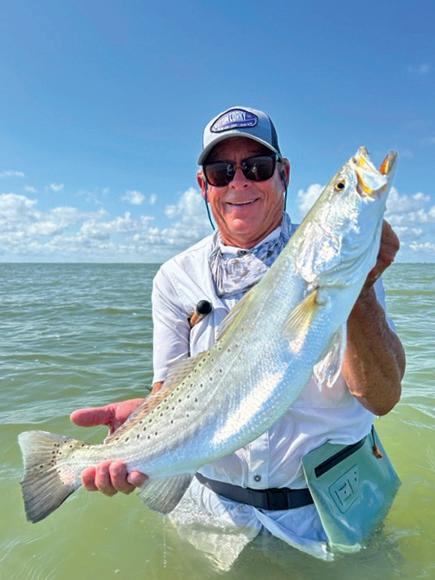
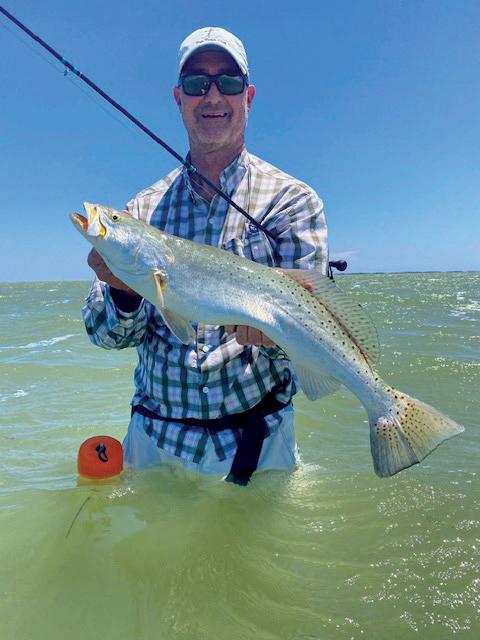
These lures are so bright that one would think it would just be too much–but it works. For the record, this has been a proven pattern all the way back to the days of the Cordell Broken Back.
I like concentrating on areas with smaller amounts of structure during times when a seasonal weather influence might create shorter feeding periods. It is an application of the Aim Small Miss Small concept you’ve likely heard me mention in the past. My confidence grows when I have several such structural features within a generally small area that I can address in a short amount of time during optimal feeding periods. See, it is all about getting the lure in front of as many targets as possible during a very limited time frame. Once this pattern is established, we can return to these areas later in the day, knowing and believing that fish are living close by and generate enough bites to finish out the day. It has always been important to me to finish our day with bites.
Something David Rowsey taught me many years ago was to avoid actually walking through these small areas of structure if planning on returning later in the day. Once you blow them out of the area there’s a strong possibility they might not return that day. It was one of the best things David ever taught me and I have not forgotten it.
Another thing I have always done is look for areas along shorelines and spoils that I seldom see other anglers fishing. Understand that the correct bottom structure must be in place and there also needs to be some food available. Last winter in Port Mansfield I found an area that looked promising but never saw other anglers fishing it, despite having seen bait present several times. On a foggy morning, I parked the boat on the shoreline and we eased offshore towards the area that I had been observing. In less than forty-five minutes we released a trout that weighed over eight pounds and another over seven, not counting one we missed that completely taco’ed a Custom Corky. I never went there again that year; maybe I’ll return next year in the fog.

View The Video Open Camera and hover over QR Code. When link appears at top of screen tap to open in YouTube.

My go-to lures this past month have been the MirrOlure Lil John and Lil John XL, along with the Texas Customs Double Ds. I never get out of the boat without these two types of lures, no matter the season. Not every day do I see both types work equally, but both types present the opportunity to keep them in front of more fish more of the time, based on their design and function.
If I had to pick my top soft plastic colors they would probably be Plum-Blue Glitter, Watermelon-Red Glitter, Golden Bream, Molting, Opening Night, Bone-Silver and Pistachio-Cajun Croaker.
The Texas Customs Double D comes in all the Custom Corky colors, and all are great under the proper water and sunlight conditions. Personally, I almost always carry several of the following: Plum Nasty, Truth, Pearl Harbor, Bay Mistress, Pinky, Grey Ghost, and my all-time favorite–Crown Royal. In dirty water, Gringo, Black Copper Dog, Double Bubble and Toxic Tide are excellent choices. Remember, Double Bubble and Toxic Tide are also excellent clear-water colors.
I am huge fan of the Texas Customs Jigheads, I believe they are truly the best on the market. I use the 1/16-ounce about 99% of the time but I probably need to start incorporating some heavier versions at times. Some of the younger anglers in the business are educating me on this aspect of the deeper water game. Mickey Eastman once told me that I could melt all my jigheads together and not have one heavy enough to fish the slicks in Trinity Bay. What great teachers I have had over my career. Looking forward to the young guns out there to educate me as I continue this journey. Thanks for reading and hope to see some of you on the boat or around the docks.
May Your Fishing Always Be Catching -Guide Jay Watkins
Jay Watkins has been a full-time fishing guide at Rockport, TX, for more than 45 years. Jay specializes in wading yearround for trout and redfish with artificial lures. Jay covers the Texas coast from San Antonio Bay to Corpus Christi Bay.
Telephone 361-729-9596
Email Jay@jaywatkins.com Website www.jaywatkins.com
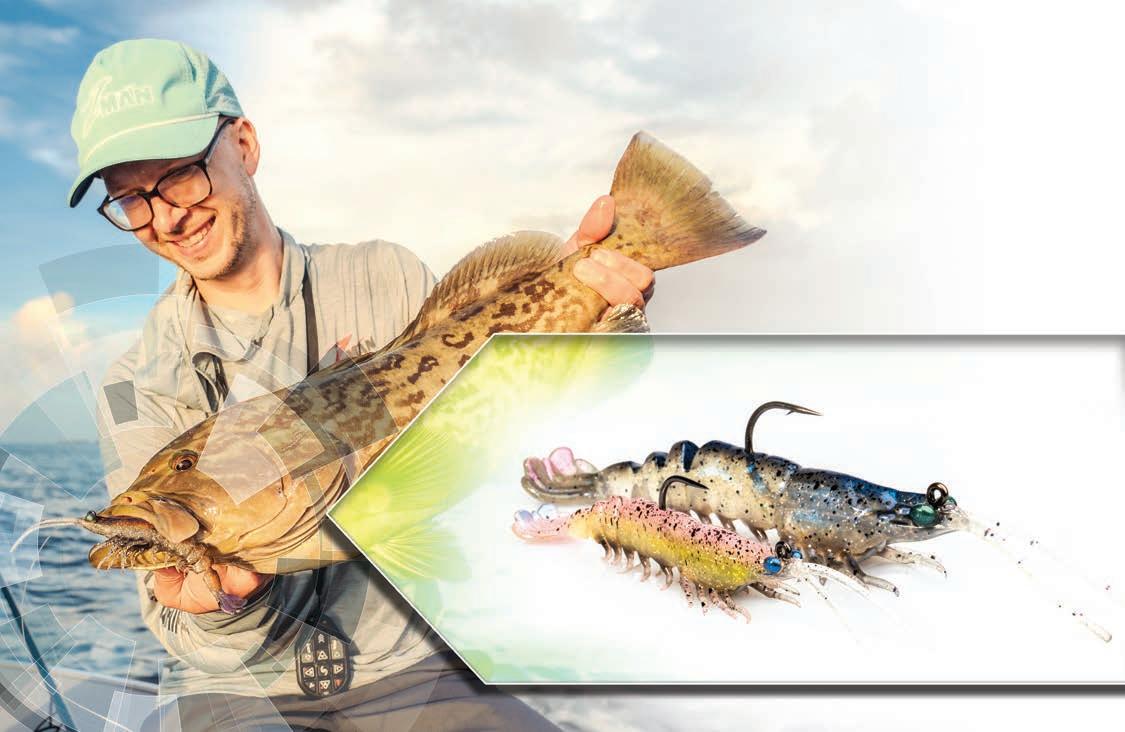












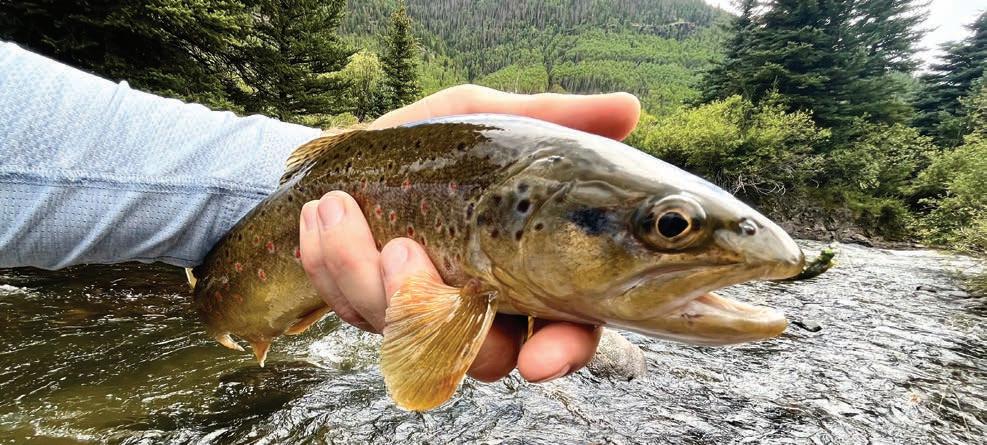
I think it is fair to say that every person has their breaking point and I am no different when it comes to dealing with Texas summer heat. I finally hit that point a few weeks ago after spending a long day outside at work and decided enough was enough. I needed a break and figured this would be a perfect opportunity to head north in search of some cooler weather. I made some phone calls to pitch the idea to some buddies and we soon had a plan coming together.
A few summers back, a buddy and I made a camping and fishing trip to the Rio Grande River at South Fork, Colorado. While there, we spent a day going through the mountains to the small town of Platoro and the headwaters of the Conejos River that offers miles of accessible river to fish. We did not get much time to

spend there as we had fished a few mountain creeks along the way, but the place stuck with me. Since that day I have Google-Mapped every square inch of the Conejos in hope that I would be able to return one day. And having hit my summer-heat breaking point, I decided that day had finally come.
So, buddy Marc and I decided we would meet at Seth’s house in Austin as it would be a handy enough spot, in the general direction of our destination. We then drove all night and after stopping for groceries and at the local fly shop for some tips and flies, we arrived at Platoro. Immediately, we rolled the windows down and were greeted with clean, 55° mountain air. Finally – some cool weather! After an hour drive down a tiny dirt road we came to the little cabin we had rented. We hurriedly unloaded everything and pieced our rods together to see what the river offered.

We had noticed on the way in that a stretch we passed to get to our cabin looked like a fast and easy place to hop in and try our luck. We spread out and began to look for deeper holes and stretches that looked productive. Seth found a section of the river that had a good bend and knew there would be a deep hole on the outward side and fish should be sitting in there. I found a stretch a bit farther downstream with fast flowing water that was littered with bigger rocks. I knew the rocks would provide a perfect shelter and ambush point for trout in the swift current.
If you are a saltwater fisherman, you can easily pick up what to do when it comes to mountain trout fishing. There really is not much difference between a moving tide and a flowing
river. Fish react the same to current wherever they are; the prevailing pattern being, where can I stage that provides the best chance for an easy meal while expending the least amount of energy.
Our tackle for the week was 5-weight fly rods and we all threw drydrop rigs. Essentially this is a bigger dry fly on top, and tied off to the back of the hook shank, a smaller nymph or bug variant.
I began to cast and float my offering down the current seams that flowed around the larger rocks. I made several casts to each side and tried my best to present my flies in such a way that seemed natural to any fish that may be there. Finally, after floating a cast past a particularly large rock, my dry fly disappeared. I raised my rod and a trout was on the line. She gave me a few jumps and I carefully brought her to hand, snapped a few quick photos and sent her back on her way. After about two hours I landed another, both having taken my bottom nymph. We eventually met back at the truck with Seth catching just one in the deeper hole where he started. We decided to head back, grill some steaks and call it an early night since we’d had such a long day.
The next morning we sat on the porch with coffee, overlooking the valley and were greeted with more than a dozen hummingbirds. The temperatures were in the upper 40s and a light jacket was the perfect match for the cool air. We then began to discuss our plan for the day and started talking flies. The olive green psycho nymph I had purchased at the fly shop seemed to work well but I only had one. Seth mentioned that he’d brought a little travel fly-tying kit along, so I broke it out and attempted to duplicate the pattern. I improvised with some materials and came up with a version we called the BGB – Big Green Bug.
We continued that day and went further downriver to explore and have a look at something different. Fishing was tough all day and we managed to at least hook fish but never got them to hand. A storm had developed and parked on top of us, enough to dirty the water. So we headed back to camp and sat on the porch, watching it rain. Once the rain stopped, a small herd of elk appeared from out of the trees and made their way into the valley. Even though we were there for fishing we were satisfied with how our evening turned out.
We had a few more days left to fish and we decided one of them should be spent on some of the creeks farther up in the mountains. We did that and managed to catch some fish along the smaller water. What is neat about these places is that they are in some of the prettiest areas you can imagine, tucked away in small bowls at the top of the mountains.
During our trip, though fishing had been tough, we were able to piece some things together. We did have one spectacular day during which we landed more than 20 fish between us. Along with that was the first time I have ever witnessed an insect hatch happening on the river. This is where some of the larva hatch and turn to flies and begin to land on the water. Naturally, it sends the trout into a frenzy and makes for a fun day, if you are lucky to be in the middle of it. The only thing they want to eat is a small dry fly that mimics the hatch and they will absolutely hammer a little bug floating on the surface. There was about an hour stretch where it happened and we were fortunate enough to catch fish during it.




All in all it was a fantastic trip and I would do it over again in a heartbeat. It was a perfect escape from the Texas heat and gave us all a good reset. On top of that, I got to spend five days exploring new water with some great friends in a truly beautiful place. It was filled with wildlife, birds, fauna, and fish. What more could you ask for?
I still stand by this forever: There is nothing more peaceful in this world than standing at the edge of a river, listening to it flow and mending flies as they float on the current.
Dave Roberts is an avid kayak-fishing enthusiast fishing primarily the inshore Upper Coast region with occasional adventures to surf and nearshore Gulf of Mexico.
Email: TexasKayakChronicles@yahoo.com
Website: www.TexasKayakChronicles.com

2024 has been a year of change, growth, and new vision for anglers on the Texas coast. It has also been a very busy year for the CCA Texas Advocacy Team and the Habitat Today for Fish Tomorrow committee. In other activities, our organization has been involved in supporting the law enforcement and research activities of Texas Parks and Wildlife Department, along with various academic institutions here in Texas.
The CCA Texas Advocacy Team has been active on many fronts. Spotted seatrout management was at the fore of many conversations and decisions by the Texas Parks and Wildlife Commission in early 2024. The commission approved new recreational bag limits of three fish at 15- to 20-inches with one fish over 30 inches as part of the daily bag at their January 2024 meeting. These new regulations went into effect in late March 2024. Then, in their March 2024 commission meeting, the commissioners approved a new speckled trout “trophy tag” for a fish greater than 28 inches. This new regulation went into effect in the new licensing period on September 1, 2024, and allows for the purchase of an additional bonus tag for license holders, essentially doing

away with the earlier provision that allowed retaining one trophy fish of 30 inches or greater length.
The Advocacy team has been very busy with the recent filing of numerous applications for project permits that could have great impact on the environment and ecosystems up and down the Texas coast. Hot topics include desalination plants in the Corpus Christi and Port Aransas areas. CCA has asked and pushed for sound environmental impact reviews, construction practices that place the intake and discharge of these plants offshore and in areas that will have the very least environmental impact.
The Lavaca-Navidad River Authority (LNRA/Applicant) has applied for a water use permit (Permit) to construct and maintain a reservoir impounding 240 acre-feet of water on the Lavaca River; diverting an additional 96,022 acre-feet within the Lavaca River Basin per year from a diversion reach on the Lavaca River for municipal, industrial, and mining purposes in Calhoun, Jackson, Matagorda, Wharton, and Victoria counties in the Lavaca River Basin, and the Colorado-Lavaca and Lavaca-Guadalupe Coastal Basins, authorize use of the bed and banks of the Navidad River (Lake Texana) to convey the diverted water and/ or store the diverted water in an off-channel reservoir, overdraft Lake Texana under specified conditions, authorize reuse of the water diverted and used under the permit and temporarily use 1,500 acre-feet of the authorized water for industrial purposes. CCA Texas and the general public asked for a public hearing during the public comment period, and the TCEQ Executive Director has granted that request. This hearing regarding Water Use Permit Application No. 13728 will be held Tuesday, September 24, 2024, 7:00 PM at the Edna High School Auditorium. CCA Texas representatives will be on hand for this important meeting. As an added note to this, “96,022 acre-feet of water per year” converted to gallons is over 31 billion gallons of water. The proposed 50,000-acre feet (16 million gallons) off-channel reservoir would be located on Keller Creek between two points identified as Latitude 28.887744°N, Longitude 96.618490°W and Latitude 28.876220°N, Longitude 96.611804°W in Jackson County.
The Habitat Today for Fish Tomorrow (HTFT) Committee remains busy with ongoing and new projects. Oysters are still at the forefront of CCA Texas habitat efforts, and the committee is watching closely as different projects evolve through the engineering and permitting phases. CCA Texas continues to be committed to the restoration of oyster reefs up and down the coast and continues to play an active role in discussions ranging from restoration
and creation to the management of the resource and the harvesting practices. Multiple projects are in process including Ayers Reef (Mesquite Bay Complex), Carancahua Bay and Galveston Bay.
In the nearshore reefing arena, CCA Texas, Friends of Sabine Reefs, and TPWD completed the first phase deployment of materials into the new HI-54 Shallow site located roughly 9 miles south of the Sabine Pass Jetties and 1.9 miles offshore of Sea Rim State Park. The next phase of deployments will take place later this fall and the partners will be deploying 8,000 tons of riprap materials donated by Port Arthur LNG. A major part of the success enjoyed by Friends of Sabine Pass Reefs has been their ability to gather support in their local communities. Friends of Sabine Pass Reefs and CCA Texas are extremely thankful for the support of local industry which includes Cheniere Energy, Port Arthur LNG (Sempra), Valero, Motiva, and Golden Pass LNG. Other partners and supporting organizations from the past and present include Texas Parks and Wildlife Department Artificial Reef Program, CCA Texas, Building Conservation Trust, Sabine Pass Port Authority and Eldridge Construction. The Sabine Pass Reefs initiative has exemplified success based on strong grassroots efforts and community support.
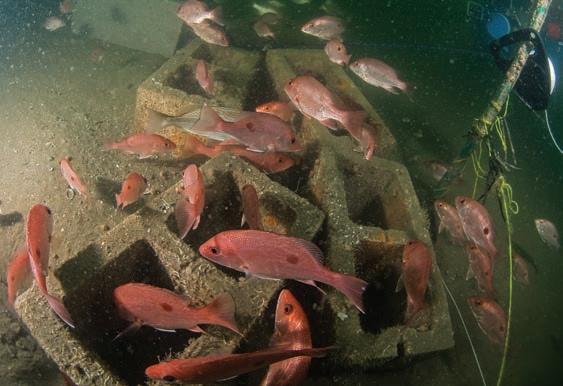
will take place in January of 2025. CCA Texas and recreational anglers across the state applaud the efforts of Friends of RGV Reefs and their success. To see the result of some of these efforts, be sure to scan the accompanying QR code and view the recent video released by Friends of RGV Reef. CCA Texas is proud to support this project and to date has donated $1,061,000 to the reefing efforts at this site.

After a long and delayed effort to have the US Army Corps of Engineers permit renewed for the RGV Reef site, the permit is finally in hand. Friends of RGV Reef have worked tirelessly to build this iconic reefing site off South Padre Island. The next deployment may or may not happen before this issue hits the newsstands, but a 110-foot retired/ decommissioned tugboat will be sunk into the site and is scheduled to occur in September. An additional deployment of concrete railroad ties
2024 has been a busy and successful year. CCA Texas’s success is the direct result of dedicated support from volunteers, sponsors and supporters in local communities. CCA Texas is committed to making our Texas coastal resources more sustainable and available to present and future generations, and this success and vision is not possible without every member. For more information about CCA Texas, be sure to visit www.ccatexas.org.


By Carlos Morales, Natural Resources Specialist
Aquaculture is the process of breeding, raising, and harvesting aquatic animals in different settings like tanks, raceways, ponds, or the open ocean. Shrimp is one of the most important species cultured in aquaculture with a production of 5.6 million metric tons globally in 2023. The Pacific White shrimp (Litopenaeus vanammei) is the number one shrimp species used in aquaculture; 80% of the shrimp produced globally in 2023 was Pacific White shrimp according to Global Seafood Alliance. Since the 1980s, Texas has been ranked as the number one shrimp producing state in the US, producing 2 million pounds in 2023 (Figure 1). One concern with Pacific White shrimp aquaculture is that the species is not native to Texas, which makes it an exotic species. Introducing non-native species could pose potential threats to native species as well as the environment. To address this threat, Texas Parks and Wildlife Department’s (TPWD) Exotic Species Inspection Program ensures shrimp farms take the necessary precautions to prevent the escape of these animals into the wild or the spread of potential diseases they may carry. TPWD shrimp inspectors routinely visit the different shrimp farms around Texas to ensure that they are producing the healthiest animals possible and that adequate escape prevention methods are in place.
In the late 80s and early 90s, the shrimp aquaculture industry exploded in Texas. There was a boom of shrimp farms across the coast, and Pacific White shrimp took front stage as it proved to be the most successful species in adapting to aquaculture environments. This species is prized by aquaculture farms for its adaptability and quick growth rates. While the industry started growing, several governmental entities began

creating rules and regulations to ensure conservation and protection of Texas’ natural resources in the face of increased aquaculture activities near the coast. Texas Department of Agriculture (TDA), Texas Commission on Environmental Quality (TCEQ), and Texas Parks and Wildlife (TPWD) created a Memorandum of Understanding (MOU) to ensure regulations of shrimp aquaculture were conducted in a manner that was (and continues to be) both collaborative and responsible. TPWD started the Exotic Species Inspection program to regulate Texas aquaculture farms engaged in the culture of non-native species. Only two species of non-native shrimp can be cultured in Texas, the Pacific White shrimp and the Pacific Blue shrimp (Litopenaeus stylirostris). Some geographic restrictions apply to the Pacific Blue shrimp, but the Pacific White shrimp can be cultured in most places in Texas. Species introduced to new environments can become invasive, leading to impacts and risks to native species and their habitats. Another issue of non-native introductions to new habitats is that they can bring diseases that can severely impact native animals. Over the years, the global shrimp farming industry has suffered disease outbreaks that affected their product negatively. Symptoms of shrimp diseases include lethargy, decreased growth, black or white spots and even high mortality rates. Some of the most important diseases of concern are White Spot Syndrome Virus (WSSV), Taura Syndrome Virus (TSV), or Yellow Head Virus (YHV). An outbreak of any disease can cause huge losses for shrimp farmers but can also be detrimental to natural resources if diseases escape beyond the confines of the farm. Native crustacean species can be negatively affected if they encounter a new virus.
Through the Exotic Species Inspection Program, TPWD attempts to minimize the risk of diseases and escape into Texas’ bays and estuaries.
Several strict measures are taken to ensure introduction of exotic species is minimized and hopefully eliminated. Shrimp farms must follow specific rules that prevent the escape of shrimp. For example, farms must have at least three screens in place between the ponds and public waters and they need reasonable security. They must also be located above the 100-year floodplain and the shrimp must be tested regularly for diseases. Only after a farm demonstrates
it can meet these requirements, are they issued an exotic species permit allowing them to culture Pacific White shrimp. The only shrimp allowed to be cultured are specific pathogen free (SPF) shrimp, meaning they have been evaluated and determined to be free of all diseases of concern by a department approved pathologist. Once the animals have tested negative for diseases they can be stocked or transported to permitted facilities.
Shrimp are inspected at least twice during their entire grow-out period by TPWD inspectors, who travel to aquaculture operations to monitor the ponds in real time (Figure 2). Also, every time a farm wants to discharge water or harvest shrimp, they must be inspected to ensure that the animals are disease-free. During the inspections, there are several specific characteristics inspectors look at to determine if there is something wrong with the shrimp. Physical characteristics of the shrimp can determine if an animal is infected with a disease, these include erratic swimming, emaciation, empty gut, and gross pathology (physical symptoms of disease). The excessive presence of birds around the pond can also be indicative of an ailing shrimp population. Once the shrimp are determined to be healthy by the inspector, the farm has a 14-day window to resume water discharge activities and/ or harvest the shrimp. If that time passes, another inspection will be required prior to water discharges or shrimp harvesting. With all these safeguards in place, the department becomes comfortable that threats to Texas’ natural resources have been minimized.
None of the diseases that TPWD tests for are harmful to humans, but they can be devastating to other crustaceans, including wild shrimp and crab populations. For this reason, the use of imported or farm raised exotic shrimp for bait is prohibited in Texas. Only shrimp

harvested from the Gulf of Mexico can be used as bait in Texas. Overall, Texas aquaculture production has been a great commodity for the state by providing jobs and reducing the pressure on the harvest of wild resources. The Exotic Species Inspection Program plays a crucial role in making sure this valuable industry can continue to operate safely and without posing serious threats to Texas’ natural resources. You can find Texas farm raised, environmentally friendly aquaculture products in most grocery stores and markets.


One of the great joys in my life is pursuing mighty offshore fish from a kayak. For more than twenty years, I’ve been out beyond the breakers, chasing some of the most desired species in Texas. Toothy king mackerel, tricky ling, tasty sow snapper—all present unique challenges and generate their own brands of thrills for those who manage to catch them from the back of a kayak. I feel honored to have been one of the individuals who helped pioneer big-game kayak fishing.
Rest assured, kayak fishing in the Gulf of Mexico is neither for the weak, nor the faint of heart. Anyone daring to participate in this endeavor must be mentally prepared and remain keenly alert for all possible scenarios. Some people pursue these quests mostly for a bounty of fresh fillets while others pursue them purely for sport.
My happy place is on the back of a kayak, with the morning sun glistening off glassy nearshore water. I’m a bit more of a pleasure seeker than a meat hunter. The sometimes surreal world of kayak fishing puts me square into one of my favorite elements.

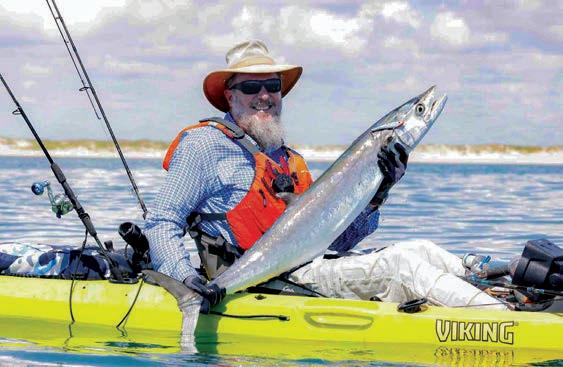
Certainly, curiosity started me down the path to fishing the open ocean on a kayak. When I started, I used an original, sit-on-top kayak. Back then, only a few brands existed, the most notable being the Ocean Kayak brand. I named my first kayak the “Yak Board.” The unique boat was designed as a hybrid, partly for fishing, partly for surfing. I purchased it for a third purpose, and for that purpose only. I wanted to use it to deploy baits for sharks. Having just finished high school and still residing in Austin, I began playing around with my new toy in the small, quiet creeks in the northern parts of our capitol city. Soon, I started taking it to the coast and deploying shark baits off the piers jutting out into the Gulf. The small boat worked great for this, light enough for me to throw over the rail at the end of a pier without any help.
Ultimately, the pleasures I experienced on the “Yak Board” led to experimentation. Around 2002, when I moved to Corpus Christi, I began to fish from the kayak, instead of just using it to ferry baits away from the piers. Originally, the desire to acquire fresh skipjacks for bait started me chasing schools of the slender fish, after launching my boat from the beach.
Though the little vessel didn’t have lots of room, it helped me get the job done on my in-the-moment hunts for fresh baits. The more times I rowed it through the breakers, the braver I became, eventually venturing out into larger surf to target my bait. Doing so tested my own physical limitations and those of my kayak.
One fateful day, while chasing skipjacks and bonito close to the beach, I hooked a strong fish. During the fight, my adversary made a fast run directly at me, winding up right under the kayak. Then I could see what had motivated its sizzling run; a mature blacktip weighing at least 100 pounds lunged at my catch, slamming into the kayak as it did. Right then and there, I changed my opinions about making future expeditions off the beachfront on a kayak.
Soon, I upgraded my collection with another model from the Ocean Kayak brand. This new boat, a Malibu 2XL, is still sold today and is still my kayak of choice for deploying shark baits. I’ve owned four of these large, robust vessels. Due to their design features, they’re both stable and roomy, easy to customize with accessories.
Once I started running baits out on it, I realized it was perfect for fishing the waters beyond the breakers, so I rigged it up for those duties. For many years, the Malibu 2XL became my dedicated fish sled. I’ve used it in the bays, offshore and for gigging flounder. I even transported one

to the floaters and caught the first yellowfin tuna ever landed from a kayak in Texas waters. But the exploits didn’t end there.
I had a strong feeling about the potential for catching fish in nearshore waters, so I began exploring the area in earnest, rigging up a cheap Humminbird fish-finder to locate new spots. I began fishing the ones I found as well as some whose coordinates I acquired from others. While doing so, my adventures grew more dangerous than ever.
Rigged with a custom milk-crate rod holder and a storage system anchored with riveted eyelets, I discovered even more possibilities. I began catching aggressive sharks, bringing them alongside the plastic gunwale and cutting the leader. My first truly prized catch was a monster cobia.
While drifting ribbonfish for king mackerel with my brother about two miles offshore, I hooked up. After a moderately long, hard fight, I finally coaxed the fish right below the kayak, and we could see it was a giant ling. I forced it up to the surface and my brother gaffed it for me while sitting on the back of his inferior kayak; he was instantly pulled off the boat into the blue water by the powerful, writhing fish. While treading water, he handed me the gaff and climbed back on his yak. I subdued the ling, preserving a memory I cherish to this day.
About three years later another opportunity for upgrading my fleet presented itself. I had the great fortune to become the owner of a brand new, first-edition Hobie Pro Angler. My good friend Rick introduced me to this unique boat, built around a creative pedal-drive propulsion system. Even larger than the Malibu 2XL,the Pro Angler became the ultimate game-changer in the offshore kayak fishing world. Today, this kayak is favored by some of the best offshore kayak anglers in the world. Its ability to troll effortlessly or hold a position in moderate winds and currents derives from its innovative pedal-drive system. This boat allows anglers to function in conditions which would render a paddle kayak basically worthless. I won multiple offshore tournaments aboard that Hobie. Despite the presence of some design flaws in the first edition, I ran it extremely hard, and it remained seaworthy for about a decade, a time-frame during which Hobie perfected the Pro Angler series. I believe these boats reign supreme as the ultimate tools for offshore big-game kayak fishing.
After my Hobie self-destructed I focused again almost exclusively on my first true love—targeting sharks from the beach. But, when the right weather windows presented themselves, I would rig up my Malibu 2XL to haul red snappers off the nearshore structures. These habits changed last year, when I found another opportunity to upgrade my plastic fleet.
In 2023, Jenn Nolan invited me to experiment with Viking Kayaks. Their paddle-drive kayaks rank among the best boats ever designed. I tried my luck with the Profish Reload. For a paddle kayak, it’s large and moderately solid and heavy, but it’s fast for its size and provides a dazzling array of possibilities for those wanting to upgrade with accessories. It can accommodate most any gadget designed for use on a kayak. The chill pod provides the ideal place for keeping snapper and the central pod variations are great for integrated fishfinders and other key tools. These qualities make it the best paddle fishing kayak on the market.
This new Viking kayak does not disappoint. While I miss the novelty of the pedal-drive system that made the Hobie Pro Angler series so fun and easy to use, I believe the Profish Reload is a sleek, effective fishing machine. My good friends, kayaking icons Tod Johnson and Glenn Madden, both own and use one regularly.
A couple of gems have stood the test of time and some newer models have redefined the rules of the game. With kayak fishing gaining so much steam the past decade, newer, more advanced kayaks are sure to hit the market. As long as a crowd of adventure seekers pursue their passions offshore, new kayaks will emerge to cater to their needs, creating a bright future in this fascinating fishing realm.


For the past decade Eric ‘Oz’ Ozolins has been promoting shark catch and release and assisting various shark research programs. Eric offers guided shark fishing on Padre Island National Seashore. Also renowned for extreme kayak big game fishing, Eric is the owner of Catch Sharks Tackle Company.
Email oz@oceanepics.com Websites oceanepics.com | catchsharks.com

October ranks high on my list of favorite fishing months and I am excited at the prospects the coming month brings. Plentiful rainfall the past couple of months has our bays in good shape for the fall season. Water temps are declining to more favorable levels, thanks to all the precipitation and cloud cover. We will also have the bull tides that always occur in October, bringing cooler and cleaner water from the gulf, and we will also be experiencing the first real cold fronts of the year. Add all these together and I will say that October should not disappoint.
Weather patterns usually become more predictable in fall, making it easier to schedule sight-casting trips. As a rule of thumb, two to three days after a moderate front can be some of the absolute best conditions for sightfishing. It’s the days that begin with light north wind that calms during mid-morning, and then switches to light southeast in the afternoon that typically offer the best opportunity. Conditions like this make it possible to fish almost any part of the bay, enjoying decent water clarity, and being able to see fish wherever we go.
Now, one might ask, how does the progression into fall weather and the arrival of cold fronts affect fish behavior and feeding activity? Let’s break it down. First, we must understand where we’ve been. Summertime temperatures can be brutal with water temps often reaching into the upper-90s in some of the backwater lakes and marshes. By contrast, what we typically see in October are water temps running in the 70- to 80-degree range, although remaining in that range often depends on the severity and frequency of fronts that reach the coast. Seventy-degrees seems to be the

magical number where big changes start to occur.
Mainly, the water clarity begins to improve. All summer long we see what is commonly known as “trout green” water. This is basically clean water, but with a strong greenish tint. This coloration is actually algae and other microorganisms that thrive in warmer water. Once fall rolls around and water temps begin to hover around that 70° mark, occasionally falling below overnight, these organisms become less prevalent. I have seen our bays go from trout green to bathtub-clear in a matter of a couple days in years past, especially if we get hit by a really hard front.
During the last few years it seems to happen in late October or early November when water temps rapidly decline 10- to 15-degrees following a front, when the bay gets shocked. No, I’m not talking about fish-killing shock, but a rapid and positive change in activity and feeding patterns. I liken it to the way we can feel hot, sweaty, and tired while doing yardwork and suddenly a front arrives. It feels invigorating at first but it doesn’t take long until we head inside to avoid the discomfort of harsh wind. The next morning you dress a little differently and probably don’t start as early as the day before. You might wait for it to warm up a bit, or for the wind to subside. You eventually head back outside and perform the same tasks as yesterday, but now you are prepared for the elements.
I believe fish react in a very similar way. It may not always occur as suddenly as the yardwork example, but it might, depending on the severity of the front. So, how could this change affect fish behavior?
If fish go deep or hug bottom when the temperature

drops suddenly, we might delay our start a couple hours, waiting for things to warm up a bit. There have been times, fishing from the tower, when we’ve seen reds lying motionless on bottom in 3- to 4-foot depths, that never even flinched when we raked a bait in front of them. In fact, there have been days when I told my clients, let’s ease out of here and come back around lunchtime. Returning to the area after the day had warmed, every cast was met with a vicious strike as though it was their last meal.
Now I know this only describes a few days of the month and I bring it up only because we can get some big fronts this month. The rest of the month is certainly more “normal” with mid-70 to mid-80s air temps and varying sky conditions. But all it takes is one big front to create a significant change in fish behavior for several days, or maybe even the rest of the month.

The majority of October days will include redfish remaining on shallow flats much of the time, tailing, or even pushing around with their backs half-exposed. This is because they are comfortable, rooting bottom and feeding on the abundance of small crabs, grass shrimp, and pinfish that inhabit the mostly grassy and shallow water. Once we are able to put a pattern on a group of fish in an area, we
can often target them for several days, or even multiple times during a day after a couple hours of break time to allow them to settle again.
October can be a month of changing weather and water conditions, yet it also can be one of the most productive and rewarding months to spend time on the water. Like I have said in past articles, pay attention to what the bay is telling you, and you will soon be calling October one of your favorites. As we draw closer to the end of the year we are looking forward to our return to Port Mansfield, for what should be an epic winter trout season. I believe we could see fishing like we experienced in 2019/20, and even the pre-freeze days of 2021. Stay tuned for reports and photos.
Captain Nathan Beabout USCG/TPWD Licensed Full time guide since 2007 Seadrift, Port O’Connor, & Port Mansfield, TX Facebook, Instagram, LinkedIn
Phone 210.452.9680
Email www.nmsportsmansadventures.com

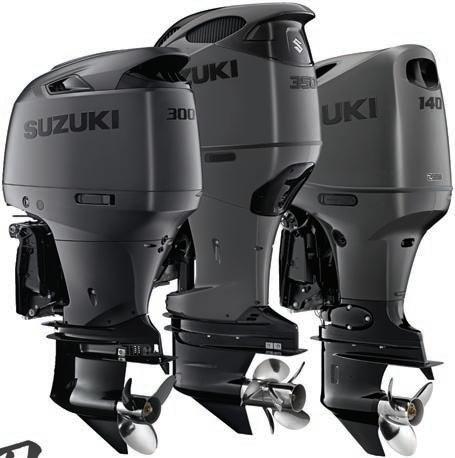
Award-Winning Outboards Combine Proven Suzuki Performance with a Bold New Look
Suzuki Marine’s initial Stealth Line unveiling included a preview of a Stealth version of the company’s V6 350AMD outboard, the industry’s first outboard motor to provide the performance benefits and increased efficiency of dual contra-rotating propellers in forward and reverse.
Based on the powerful industry response and positive recognition for the new Stealth look, Suzuki Marine is moving forward with plans to add both a 350HP integrated steering model and 300A (single prop) just in time for the 2025 boat show season, as well as an in-line 4-cylinder 140HP model available in late fall/early winter 2024.
Learn more about Suzuki Marine’s Stealth Line at your local authorized dealer, or visit www.SuzukiMarine.com/outboards/stealth-line/
Huk, the leader in performance fishing apparel, introduces the Cold Front+ Pullover Hoodie for Fall 2024. It’s perfect for early morning or late evening fishing, designed for female anglers prioritizing comfort and warmth during frigid months. Made from super comfortable heathered fleece, brushed for an extra soft feel, it is perfect to wear on and off the water. The hoodie features a hidden zippered security pocket for valuables, ensuring that essentials are accessible. Spandex in the fabric maximizes mobility, enhancing comfort while casting and maneuvering. The Cold Front+ Pullover Hoodie is a high-quality, practical choice for winter, ideal for lady anglers seeking comfort and functionality. www.HukGear.com
Cold Front+ Pullover Hoodie Features
• H idden Zippered Security Pocket
• Spandex for Perfect Stretch
• Heathered Fleece for Maximum Comfort
• XS -XXL Available Sizes




Berkley Fusion19 Hybrid Jighead ($5.99-$6.99)
The Fusion19 Hybrid Jighead was designed as an ultra-versatile jighead with modern roundball jig performance and a 90-degree line tie. Built around a sticky sharp double-conical hook point and a conical bait keeper for straight and precise rigging, the Fusion19 Hybrid Jighead maintains precise balance while cutting through the water. Available in a variety of weights and hook sizes, the Fusion19 Hybrid Jighead was designed to excel for mid-strolling, damiki style baits, finesse swimbaits, and vertical applications. Pair it with Berkley’s new PowerBait Drip Minnow and Drip Swimmer or any of Berkley’s softbaits for an unprecedented advantage. www.Berkley-Fishing.com

Star-brite Mesh Trash Bag is the perfect solution for keeping your marine adventures litter-free. With its Locking Suction Cup, it attaches easily to smooth surfaces like boat hulls and interiors. The Tie Cords with Clips allow for secure attachment to leaning posts, T-tops, and railings. The Drawstring Top with Litter Guard ensures trash stays contained even in windy conditions. Made from Aerated Mesh Material, it prevents musty smells while keeping your boat clean. Its Reinforced Seams make it durable for rugged use on the water. With a 20-liter capacity, this bag is essential for all saltwater trips. Easy to clean, just rinse and dry thoroughly. Get yours today at www.Starbrite.com
Savage Gear introduces a never-seen-before lure design that enables precise casts and long-distance presentations. No longer will anglers endure the frustration of topwater lure hooks fouling on the surface upon impact. The innovative magnetic weight transfer system in the RevMag Walker allows the weight to move backward during the cast. Then the internal magnet kicks in, transferring the weight and propelling the weight forward while ensuring a smooth, flat landing on the water. The lure delivers a wide side-to-side walking action, mimicking a dying fish that triggers ferocious bites from the large predators roaming the water. Each lure is equipped with robust, corrosion-resistant ultra-sharp hooks, with a vice-like grip ready to snare and land the hardest-fighting fish. www.SavageGear.com


The PENN Fathom Electric builds on the well-established Fathom series, incorporating the same powerful inner design–adding a powerful electric motor that utilizes a 5Ah capacity battery with an integrated battery life indicator on the display screen. Coming standard with a large LED display screen, the reels are designed with intuitive controls that allow anglers to fully immerse themselves in the thrill of the chase without distraction. Users have the flexibility to tailor their fishing experience through programmable functions that precisely calibrate the reel. Features include line diameter input in millimeters for accurate line counter readings, an auto-stop for hands-free retrieving, and an integrated line counter that provides precise measurements in feet or meters, enhancing accuracy on the water. Learn more at: www.PennFishing.com/blogs/stories/new-product-preview

Bink Grimes is a full-time fishing and hunting guide, freelance writer and photographer, and owner of Sunrise Lodge on Matagorda Bay.
Telephone 979-241-1705
Email binkgrimes@yahoo.com
Website matagordasunriselodge.com
Some years warm, some years cool –doesn’t really matter, right? It’s October and we love it.
Cooler weather gets our autumn fishing going with shrimp leaving the bays and birds working everywhere. Warm weather keeps us in a summer pattern.
Typical weather patterns seem to be later and later every year. The last few years, the first cold fronts have not arrived until November, so “working the birds” has also been late. However, while anglers are waiting on gulls to dive, mid-bay reefs are left alone. Fewer and fewer people seem to want to wade during the fall, but there are some great fish that hang on the reefs just waiting to eat a big Super Spook or She Dog.
The summer of 2024 saw drastic improvement as far as speckled trout quality in East Bay. Less pressure, tighter limits and fewer boats on the water due to slower economy and tighter budgets have all contributed to fewer fish leaving our bays.
It is actually pretty simple – when you take less, there remains more. It is all about debits and credits – the fewer debits you make on your credit card, the more left in the account. It is the same with our fishery.
Higher tides this month will be a boon for redfish. There are lots of shrimp in the back lakes and marshes and many will target those fish with small topwaters and live shrimp under a Mid-Coast cork. Some of the largest redfish will be found in the middle of East Bay

under birds. When things are really firing off in the fall there will be 1020 groups working in the bay. One will have solid trout beneath, the other will be all redfish.
Waders along the south shoreline of West Bay will work the points of shell with Down South Lures and Bass Assassins. If you want both redfish and black drum take a bucket of live shrimp and work the points with a cork. There will be plenty of both in October.
Normally, the in-between days of summer and fall make speckled trout a bit finicky, especially when winds blow and you can’t get to the fish. That’s when redfish take up the slack. Higher tides push reds to the back lakes where they begin schooling along shorelines. It’s not uncommon to find pods of 2- to 4-dozen fish with noses down and turquoise tails out of the water.
Most of the reefs have drop-offs from years and years of oyster dredging and the trout like to work the edge of the shell and the mud. Most of those hotspots are on the tips of the reefs and can be reached with a solid cast.
With the loss of seagrass across the entire Texas coast, shell has been a premium. I can’t remember a year where I have fished almost exclusively on shell as opposed to sand and grass.
Times – they are changing. Either we adapt to new fish patterns or fish empty parking lots.
Enjoy the cool fronts passing through, enjoy migrating ducks and geese arriving from the north, enjoy the autumn sunrises and sunsets. October in Texas rarely disappoints.
Sunrise Lodge and Properties is a full service waterfront hunting and fishing lodge and real estate company specializing in coastal homes, farm and ranch properties and vacation rentals.





Port O'Connor Seadrift
Captain Gary Gray is a full time guide, born and raised in Seadrift. He has been guiding the Seadrift/Port O’Connor region since 1986. Gary specializes in year ‘round wade fishing for speckled trout and redfish with artificial lures.
Telephone 361-785-6708
Email bayrats@tisd.net Website www.bayrat.com Facebook @captsgaryandshelliegray
October is a wonderful month no matter how you rate it. It’s not only the first full month of fall but also the beginning of the fall fishing season here on the middle coast. What will make this fall even fishier is the fact that Mother Nature blessed our part of the coast with a great rain event recently that dropped the water temperatures from the oppressive 88 – 90 degrees we’d been enduring for weeks.
With these cooler water temperatures we found the fish less lethargic and more apt to feed than before the cool down. Meaning we didn’t have to strictly target and fish deep water areas adjacent to shallow areas. The fish were instead staging more regularly on shallow shorelines near backwater drains and small openings connecting backwaters to main bays. We were mainly throwing 4” Saltwater Assassin Sea Shads in Purple Chicken and Momma’s Chicken colors. We were using these paddletail lures for the natural swimming action the tail provides. You can slow your presentation to little more than a crawl when necessary and still produce the vibration that excites redfish, trout, and flounder into striking.
Speaking of flounder, we have been seeing and catching more of these tasty fish since the cool down and I believe it might have jumpstarted their fall migration and spawning activities. If you are intent on targeting flounder you might want to try a curlytail. These lures seem hard for a flounder to pass up and you can work them slower along bottom than the rattail and paddletail types.
We normally target flounder on the flats in front of deeper drains that connect back-lakes to main bays. Working your lure with the current provides the most natural presentation. When flounder are feeding aggressively they will thump your offering like a hungry trout, which definitely lends to gaining a secure hookset. When not feeding aggressively you will need to delay your hookset for a couple of

seconds. I know it’s hard to do but I stop my retrieve when I feel a very light tap. You will feel a slight weight on the line as the flounder holds the lure in its mouth, and you might also feel another slight tap as it slowly sucks the lure in. This is when I rear back with a sharp hookset and pray it stays connected.
Another reason to love October is because cool fronts become more frequent and each passing seems just a bit stronger. Air and water temperatures decline a bit more as each front arrives, further accelerating the normal fall patterns of all the bay’s inhabitants. At the head of San Antonio Bay, in the Guadalupe estuary, the white shrimp will begin their migration toward the gulf. You will know when this gets underway as almost overnight you will see flocks of gulls working over schools of shrimp being chased to the surface by every species that preys on them. The species I will be targeting are speckled trout and redfish.
If chasing flocks of gulls and terns is not your thing that’s really not a problem. As these shrimp make their exodus through the bay system, they will create what I call a natural reloading of the various reefs in their path. Meaning as the shrimp schools encounter a reef they will pause temporarily as the currents they are riding on become somewhat disorganized. The shrimp will stay in that area for a while until the currents recover and gets them moving again.
That’s my explanation of reloading–game fish following the shrimp schools and taking up temporary residence in greater than normal abundance on the reefs–because that’s where the most reliable food source is located. I have watched this play out for years and I hope this behavior will remain the same for many years to come. While it’s not exactly like shooting fish in a barrel, there will be days, when everything falls into place…it can get pretty close.
This reloading effect also happens similarly on certain shorelines that lie along the migration route, such as the east and west shorelines of San Antonio Bay and also the north and south shorelines of Espiritu Santo. Anglers that ply other bay systems along the coast that are headed by habitat where white shrimp thrive can expect similar results. Just head for the estuary; that’s where the migration will begin.
One last note when targeting flounder–Be advised that November 1 through December 14 marks closed season for retaining flounder to promote escapement to the gulf for spawning.
Fish hard, fish smart!




David Rowsey has 30 years in Baffin and Upper Laguna Madre; trophy trout with artificial lures is his specialty. David has a great passion for conservation and encourages catch and release of trophy fish.
Telephone 361-960-0340
Website www.DavidRowsey.com Email david.rowsey@yahoo.com

@captdavidrowsey
Putting another summer in the rearview mirror is always a highlight for me as it marks the beginning of everything I love most in the outdoors; bigger trout, shotguns, bird dogs, archery hunting, and much time with cherished friends.
As I started seeing pintails appearing regularly in September, the first signs of the annual mullet spawning migration was also beginning to take form. This migration will continue to develop through October and well into November as the primary food source of the Upper Laguna and Baffin’s gamefish populations travels the ICW north toward the Port Aransas jetties, and south through the Land Cut toward Port Mansfield’s East Cut. Spoil island shorelines typically become hotspots of angling opportunity as this is happening. There will be many other options along adjacent flats and dropoffs along the migration route, and anglers will be well served to check any structure that is holding rafts of mullet at this time.
There is an old saying in the restaurant business that, “the eye eats first.” Same deal when assessing a good looking spot to begin a wade. Finding fish is not something that only guides do on a daily basis, anyone who pays attention to their surroundings and observes all the signs is qualified to be successful in this game. A trout is a simple creature; it is wired to eat for survival, recreate itself during spawning season, and seek safe havens in which to rest. The eating part is the one we, as anglers, can count on. Fortunately, we can actually see this taking place in the form of surface bait activity before we ever step out of the boat.
This time of year, especially, it could not be any easier to locate trout via eyesight to take much of the guesswork out of the equation. Anyone who fishes with me will vouch that we are not getting out of the boat unless what is presented on the menu is first appealing to the eye. If there is nothing present for the trout to eat, how can we expect to find a consistent bite?
No bait activity in an area should be viewed the same as a “closed” sign hanging on the door of a restaurant. Hopefully y’all get my point, because this time of year, on most spoil islands, there will be what appears as a line of food vending trucks from the trout’s point of view. If you can see that your chosen area has anything short of this you would be well advised to hop over to another spoil island until you find it. Nothing for a trout to eat means no bites for you. Quoting my dear friend Jay Watkins, “Fish smarter, not harder.”
When it comes to testing the temperament and feeding attitude of the trout during this migration, my go-to money maker is the 5” rattail Bass Assassin. There have been hundreds of knockoffs of this particular lure, but it will always be the “OG” in big trout soft plastics and the king
of color pattern options. If you are serious about consistent hookups on big trout and a lure that has a legit track record at catching them, you would be well advised to have your wade box stuffed with them. There is literally a color pattern for every water and light condition you might encounter. Currently, I’m loving the Slammin’ Shad, which is a pearl base color with a lot of gold flake.
As much as the Bass Assassin will trick many trout during the mullet migration, another highly-favored option to cast amidst all the bait activity is the MirrOlure She Dog. Long casts, big surface reflections, and the knocking sound of a large ball bearing in an empty soup can makes this lure shine above any other topwater offering. The She Dog is especially effective on these fall days of somewhat murky water created by north wind and heavy surface chop.
Regardless of what you use to catch them, natural bait or lures, remember the new regulations and release them healthy to reproduce again. I honestly believe we are on the verge of seeing the return of our old fishery that many of today’s anglers never had the opportunity to witness. Three and a half years of heightened conservation ethic since the devastating 2021freeze and we are already seeing a huge difference in our trout fishery. Hold on tight, it’s going to be a fun ride.
Remember the buffalo! Capt. David Rowsey


There could be no greater evidence that 3.5 years of conservation is paying dividends than consistently catching trout like this during the dog days of summer.
Open Camera and hover over QR Code. When link appears at top of screen tap to open in YouTube.





Captain Wayne Davis has been fishing the Lower Laguna-Port Mansfield for over 20 years. He specializes in wade fishing with lures.
Telephone 210-287-3877
Email captwayne@kwigglers.com
Greetings from Port Mansfield! All is well here and I am looking forward to seeing some cooler temperatures soon. That said, positive things have already begun to unfold, thus supporting a good fall fishing season. As of just a few weeks ago we were seeing numbers of redfish schools roaming the flats; they were easy to spot while cruising shallow water with calm conditions in early morning hours. The rippling of the surface was readily evident, clearly pointing out a school of redfish. This was quite common on weekday mornings, not so much on weekends, when increased boat traffic seemed to push them toward deeper water just off the break. I will say we had some epic topwater action during this period. Our water is in great shape and things could not be better down here in the LLM, with one exception – the floating grass problem. I have certainly dealt with it in the past but it just seems worse this year. I touched on a strategy in my last article to help with this issue, such as looking for current lines and fishing the clean side, but that option is not always available. Sometimes we have no choice except to stubbornly work through the grass. This can be challenging and frustrating to even the most determined anglers. In any event, overall, it works to our angling advantage by making us better anglers; having to make accurate casts to land our lures between lanes of floating grass and the like. Also, we may have to adjust/switch out lures while working through the issue. Just remember that every day cannot be easy, we need to learn how to adjust and address issues we encounter in our careers, no matter if it is in the office or on the bay.
It has been a fun late summer season finding those pods of redfish along spoils and shorelines, and having anglers see them for the first time. This was just the case recently when first-time wader Catie Jackson was able to witness this firsthand. She was able to catch some nice redfish on surface lures and then was fortunate enough to be able to walk right up on a school of tailing redfish in ankledeep water. Check out the attached QR code for a short video of her landing a redfish on a topwater.
on the flats. This means topwater action will pick up and you can bet I will have a Mansfield Knocker rigged up on my Fishing Tackle Unlimited G2 Green rod and Shimano reel. This topwater action will continue into the winter and even beyond so I am already excited. I will tell you that topwater blowups of any kind never get old. We will also be throwing more mid- to full-size plastics such as the KWigglers 4-inch paddle tails and the Wig-A-Lo. This is also the time of year when baitfish will be abundant all across our flats, with huge rafts of mullet becoming common in 1-2 foot depths. It will not be hard to know if there are gamefish in the area, simply because you will see frequent explosions in and around the mullet. Additionally, our water levels should be rising soon if they have not already, which will help a lot.
Our cover image is from last year’s Texas Women’s Anglers fish camp and boy, what a success it was. We are just finishing this year’s camp, and I cannot wait to point out the highlights in future articles so stay tuned.
I will be headed back to Brazil in a couple of weeks for another Amazon adventure and cannot wait to get after those big peacock bass on topwaters again. I know we have all witnessed big blowups during our wade fishing outings, but I have not found a blowup anywhere that comes close to the ferocity of the peacock bass. Following the Amazon adventure, I will be heading straight to Argentina with good friends Joe and Emily Meyer and long-time fishing partner Bobby Walker for some golden dorado action. I am confident after this marathon fishing adventure I will be anxious to get back to Port Mansfield just in time to chase trout that will have plumped up while I was gone.

We should soon see an increase in fishing activity once cooler temperatures begin arriving to the Lower Laguna Madre. We do not necessarily need a cool or cold front, just a few degrees lower average overnight and daytime temps to trigger an uptick in feeding activity
Until next time, remember fresh is better than frozen. View The Video Open Camera and hover over QR Code. When link appears at top of screen tap to open in YouTube.



From the front, dragonfish look about as terrifying as their mythological namesakes likely appeared to the knights in ancient tales. Sleek, slender, and quite small at about 20 inches long, they don’t really resemble dragons, but their gaping jaws full of fangs are scary enough to seem like a storybook monster. They also live deep in the dark twilight and midnight zones of the sea, where their dark skin allows them to remain unseen so they can ambush their prey.

Deep-sea dragonfishes have large fangs and dark skin. Their bioluminescent light organs (prominent in this image) are thought to be used for locating mates. Credit: Naturalis Biodiversity Center
Living in the light-less depths of the sea, it can be hard to find a mate, especially because creatures can be very spread out. Dragonfish have bioluminescent light organs on their head that are thought to be used to attract mates. However, the light organs of males are bigger and brighter than those of females. So a female might see a male’s glow, and he might not be able to see her dimmer response. But evolution has produced a partial fix for that problem: bigger eyes for the males, so they can take in more light and see females more easily.
Researchers from Boston College and Stockholm University discovered this adaptation in males by studying two different species of deepsea dragonfishes. They measured eye size and calculated the amount of light produced by the light organs of each sex for Malacosteus niger and Photostomias guernei. Then they used those data to estimate the distances at which a fish would be able to see a member of the opposite sex. In both species, the females would see the males sooner—that is, when they’re further away—than males would see females. But males of both species had bigger eyes, and that shortened the distance at which males would see females by up to about sixteen feet.
The larger eyes of males still wasn’t enough to match the distance at which females could see males, leading to another question for biologists to investigate: why are light organs of males bigger in the first place?








Colorado to Port Isabel
A Brownsville-area native, Capt. Ernest Cisneros fishes the Lower Laguna Madre from Port Mansfield to Port Isabel. Ernest specializes in wading and poled skiff adventures for snook, trout, and redfish.
Cell 956-266-6454 Website www.tightlinescharters.com
Before I get into my fishing report, I have something I want to share. It’s about fish behavior and patterns that I have observed. For the past month or so I have witnessed both guided and non-guided boats stacked in a small area of the ICW, sometimes as many as thirty, encircling a big school of redfish and drum. I have no scientific proof, but from years of experience, I would say these are the same schools that used to roam the flats. The pressure on these fish has become a daily constant; they have adapted and now seem to spend more time in deeper water. We no longer see the huge schools of redfish and drum roaming the flats as they once did.
I believe in catch and release, but I’m by no means a fish-hugger. If my clients want to keep fish, that’s fine. However, I offer an incentive program if they release all their fish. I see it this way; the fish are my business partners and I want them to stay healthy for generations. My livelihood depends on it. Yours may not. Fishing for you is entirely for pleasure, and that’s why we all fish. Many anglers, especially on guided trips, want to keep as many fish as possible within the limits, and again, that’s fine. It’s fine if the fish will be eaten and not go to waste in the freezer. I firmly believe it’s up to the fishing guides and accomplished anglers to educate their fellow fishermen who think like my cousin used to say, “If it fits in a tortilla, bring it.” If you think our fishery is healthy today, you weren’t around twenty or thirty years ago to see how our bays once flourished. Every spot you stopped had plenty of fish. It was easy pickings. But over the years, people like me had the mentality
of keeping everything that was legal, all for returning to the dock with the most fish, showing off the catch, and generally depleting the resource. Yes, the catching is why we go, but please consider keeping only what you will eat fresh and releasing the rest so the next generation can enjoy what we all love so much.
With the tides rising considerably, redfish are beginning to show in good numbers in the back-bays on the west side of the ICW. Redfish will be prowling for tiny crustaceans like crabs and shrimp that like to hide in the grass and burrow into the soft bottoms these backwater areas are known for. Pay attention to the small coves, points and potholes. Topwaters are excellent baits this time of the year. When the redfish want something below the surface, try ZMan’s new Big Ballerz or the Kicker CrabZ. Both of these soft plastic baits have been producing very well for us.
The trout fishery is looking good. Lots of small ones, but we’re also seeing good numbers of slot fish, and even some in the oversize category. Currently, the ICW has all the trout you can catch. Slicks are still popping out on the flats; keep an eye out and your nose tuned for that sweet aroma of a trout slick.


The key depth to find a good trout bite has been thigh to waistdeep. An area with a color change is always a plus. As the water continues to cool bigger trout will begin to feed more reliably in shallow water. Bigger trout will favor less-pressured areas, such as spoil island shorelines, westside back-bay shorelines, and way up shallow on the eastside sand. They will also be stationed in potholes on the flats. ZMan Big Ballerz, Paddlerz, and Streakz have been our best producing baits of late.
October is still a good month to target snook before they head to deeper water. They will still be found shallow, but only for a short time, as the first truly cold fronts can arrive anytime in late October.
Flounder will be readily available, and so far, it’s been a good year for these bottom dwellers. Fish the ICW, old oil field channels, and guts adjacent to the ICW.
Our fishery has changed so much over the years. The numbers are far from what we had twenty-thirty years ago. It’s up to us to take care of this precious resource we love so much. By educating and not belittling others, we can make a difference. I changed my attitude over the years, meaning anyone can be taught to be more conservative about the fishery.
Catch and Release Effort…because we C.A.R.E.

View The Video Open Camera and hover over QR Code. When link appears at top of screen tap to open in YouTube.





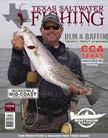


Trinity Bay - East Bay - Galveston Bay | James Plaag Silver King Adventures - silverkingadventures.com - 409.935.7242
In some years, the tarpon fishing can be great during the first half of October, so James always has an eye on that, but it’s also a month when he starts fishing for trout in the bays more often than at the end of summer. “We sometimes have a late run on the silver kings this time of year. If the weather’s calm, and we don’t have too many storms stirring up the Gulf, we keep trying to stay on ‘em. Once we decide the tarpon season is basically over, we’ll start working the inshore waters again, looking for trout. This time of year, the wading is often good, especially in places near entrances to shallow backwater areas. The bite is usually best in the shallow areas when the tide is high and we have onshore winds and warmer weather. If we get some significant north winds and cooler temperatures, the action can really pick up in the main bays, as the shrimp and other species begin moving out of the marshes, toward the Gulf. Casting around gulls working over school trout out in the middle can be fun, but the action for bigger fish is often better on the shorelines this month.”
Jimmy West | Bolivar Guide Service - 409.996.3054
Jim had been in the fields, doing maintenance on them and running plenty of dove hunts, during the days before we talked. “We have so much grass and weeds growing this year, it’s making a lot of work for people like me. We’ve got a good number of doves, but they’re pretty spread out, since they have so much food and water around. The teal numbers already look outstanding, and I expect we’ll have some great shooting once that season rolls around. All the standing water makes for excellent teal habitat. I do have some days left to book hunts, and will likely have a few more once big duck season gets here. On the fishing side, I expect the action to pick up once October arrives. It’s normally a pretty dry month, with cooling weather. We should have plenty of birds working in both Trinity and East bays, for people wanting to target trout. But, the fishing for reds will likely be more productive. We’ve never really seen a summer with as many flood events as this one, so there’s no real track record to look back at, but I expect the fishing in Trinity, especially for reds, to be good this fall.”
West Galveston - Bastrop - Christmas - Chocolate Bays
Randall Groves | Groves Guide Service
979.849.7019 - 979.864.9323
Like most people who work on the coastal waters while making a living, Randall looks forward to the shorter, cooler days of fall. “I love the fishing this time of year. As autumn progresses, the bait and the game fish all begin to migrate out of the backwater areas, headed toward the pass, and eventually into the Gulf. When they do, the fishing is often easy, sometimes around working birds. We do well with topwaters this time of year on a daily basis. One of my favorites is a black/gold/orange Skitter Walk. I’ll also throw the white one at times, especially if I see a bunch of ribbonfish around. Of course, slow-sinking twitchbaits work great this time of year too, especially when they’re worked over a muddy bottom with some shell scattered around on the calmer days after fronts blow through. During the toughest bite days, we do best throwing soft plastics like Norton Sand Eels and working them fast overall, with spastic action, trying to trigger reaction strikes. In this scenario, when we’re often fishing out of the boat in water too deep to wade, I prefer a natural colored lure like tequila gold rigged on a three-eighths ounce jighead.”
Matagorda Bays | Capt. Glenn Ging
Glenn’s Guide Service - 979.479.1460 www.glennsguideservice.com
October is one of my absolute favorite months of the year for fishing the bays around Matagorda. The weather is finally cooling down a little, and the fall migration of shrimp from the marsh to the Gulf usually gets going in full force. I’ll be fishing the working birds as much as possible this month, mainly throwing Vudu Shrimp under Coastal Corks, Bass Assassin four-inch Sea Shads, junior-size Spooks and Skitter Walks, depending on the type of conditions and the feeding mood of the trout. Redfish should be schooling in the back-lakes. They’ll be fairly easy to catch on live shrimp under popping corks, paddletails and on small topwaters, especially early in the mornings. The wading should be productive on the reefs in the Chinquapin chain, and on some of the mid-bay reefs. The north shoreline of West Matagorda Bay produces good catches this time of year for anglers using live shrimp under popping corks too, especially in stretches with some reefs or at least good concentrations of scattered shell in the shallows close to the bank. When we have light north winds for a while, the surf will turn on again, as will the action out at the jetties.
Palacios | Capt. Aaron Wollam www.palaciosguideservice.com - 979.240.8204
“We recently had some of the best fishing we’ve experienced in many moons. Fishing for all three of the main species has been outstanding, as has the flounder gigging. The tripletail action has also been way better than average. The surf along Matagorda Peninsula has been phenomenal at times. When winds are light and the surf calm, the trout have been hammering She Dogs and Skitter Walks all morning long, in the first gut at daybreak, then around the outer bars after the sun climbs higher. Platforms in West Matagorda have been on fire as well, with live shrimp rigged about four feet under popping corks working best out there. Redfish have been all over the bays, schooling and chasing grass shrimp, shad and mullet. Pumpkinseed/chartreuse Bull Minnows rigged on eighth-ounce jigheads have worked best to trick the reds. Giggers have been bringing in lots of flounder at night, finding most of their fish over clay and pea-gravel bottoms. They’ve averaged about seventeen inches. I look for October to be a great month, as water temperatures start to drop and we get good bird action in South Bay, East Bay, Turtle Bay and Carancahua Bay.”
Port
Back Bay Guide Service - 361.935.6833
Lynn eagerly anticipates the cooler weather and excellent fishing in the Port O’Connor area during the first full month of fall. “I like to fish the back-lakes quite a bit this month, especially if we get a bull tide, which we usually do. The fishing for both reds and trout can be excellent in those locations, particularly early in the month, while the weather’s still pretty warm and the coves and lakes are bulging with water. On the high tides, it’s often important to fish the shallowest parts of the lakes, either throwing around thick grass beds or at grassy points on the shorelines. The fishing can be great around some of the main reefs this time of year too, especially when currents are running strong and creating some ripples on top of the shell. Of course, we often have birds working in various places this time of year, and that creates another type of opportunity. We do well throwing all kinds of lures during October. When conditions are warm, we do

great on topwaters. When things cool off some, slow-sinking twitchbaits and soft plastics produce better. After stronger fronts later in the month, fishing around the drains on outgoing tides picks up.”
Rockport | Blake Muirhead
Gator Trout Guide Service - 361.790.5203 or 361.441.3894
Blake says the tide has been high in the Coastal Bend lately, and he expects the condition to prevail through October. “When we get a big tide like this, I usually spend some time fishing right on top of the reefs, targeting both trout and redfish. All our local bays have some, and the fishing can be good on all of them when they’re covered fully. We also catch well throwing our topwaters and tails right next to the emergent grass on the shorelines when the bull tides come in. This pattern is normally good in October too. The fishing has been steady lately, with lots of trout around. We’ve been able to get out into the surf quite a few times, and it’s been excellent. The storms we had this summer have really flushed Cedar Bayou open. Vinson Slough is back to productive too. If we get calm winds in October, I’ll probably be heading out that way. This month is a kind of in-between month for the ducks, but it’s still dove season. I’ll be heading to the fields to hunt the doves some, mostly in the afternoons, and I’ll be booking hunts for the big duck season.”
Upper Laguna Madre - Baffin Bay - Land Cut Robert Zapata | rz1528@grandecom.net - 361.563.1160
“In October, a good many people who fish at other times become interested in hunting and/or preparing for hunts later in the year. So, this is one of the quietest months of the year, with low traffic on the Upper Laguna Madre and in Baffin Bay. With the cooler, longer nights, the trout and redfish will stay in the shallows more of the time. Early in the mornings, we find them in good numbers on area shorelines, close to the bank, and around the spines of some of the famous sand bars. When we’re targeting them in these places, She Dogs and Catch 5s draw lots of strikes, if the floating and suspended grass don’t make working them too much of a hassle. If and when the grass does become a problem, like when really high tides float lots of dead vegetation off the grass mats and then north winds blow the strands out into the bays, we do better on Bass Assassin Die Dappers rigged on either eighth or sixteenth-ounce jigheads. Since we have light winds more often than not this month, the water gets really clear most of the time, so we prefer using soft plastics in natural-looking colors.”
Corpus Christi | Joe Mendez - www.sightcast1.com - 361.877.1230
“Catching lots of fish in October can be challenging at times, though the cooling weather certainly makes spending time on the Upper Laguna Madre, Baffin Bay and Corpus Christi Bay pleasant. When strong tides gush in during the weeks immediately following the fall equinox, bull tides rise in the bays, spreading the fish out. In some places, coping with this issue simply means fishing tight to the shorelines. This is true in places like the King Ranch Shoreline north of Baffin, and in parts of Baffin itself. In other places, where large coves and giant shallow flats lie adjacent to the places fished more often on tides of regular levels, figuring out where to fish can be more complicated. In places like those, mostly in the ULM, the fish often ride the bull tides far out into super shallow areas this time of year. When they do, cruising around in a shallow-running boat and looking for signs like wakes and slicks, or the fish themselves, is the only way to find them. Once located, fish are usually pretty easy to catch this time of year in the cooling water. Soft plastics work best, with topwaters working great on some days, too.”
P.I.N.S. Fishing Forecast | Eric Ozolins
361.877.3583 - Oceanepics.com
In October, the dusky anchovies should be peaking in surf activity
along much of the Lower Coast, with mullet beginning to run on the Upper Coast. There should be many different species to target. Those in search of red drum should stick with live mullet. The only drawback to that is skipjacks, jack crevalle, and Spanish mackerel also love the mullet. The jackfish will really start to run the beaches in late-October. When they’re seen frenzying at the surface, large topwaters work great to catch ‘em. Spanish mackerel will usually be present around schools of skipjacks found under working birds. Skipjacks are present in greater numbers than all other species this month. With so many of them around, the sharks will also be plentiful. The blacktip and bull sharks will move inshore in great numbers to feast on all the prey species. Casting or kayaking out a skipjack bait will almost guarantee a bite from one or the other. Anglers walking out on the sandbars to cast baits or fish should keep an eye out for the sharks, which will move into the shallows to attack the bait balls. This month, hooking a tarpon is also possible, especially for folks using lighter gear.
Port Mansfield | Ruben Garza


Snookdudecharters.com - 832.385.1431
Getaway Adventures Lodge - 956.944.4000
Fronts are slowly making their way down to the Rio Grande Valley and the Lower Laguna Madre, providing welcome relief after the summer heat wave. The redfish are still making their way toward the Gulf on their annual migration, though the schools are somewhat smaller than the ones we see in September. They’re normally lurking somewhere around the East Cut, on both the north and south sides. They’re easiest to catch in the mornings on topwaters, when they’re prowling and chasing bait on the bare sand bottoms. As the day continues and the sun rises higher, the better action shifts out into deeper water, where the trout bite is steady. North of the Cut, areas like the flats near the Weather Station, Butcher’s Island and Wagner’s Bar have plenty of potholes, all of which should be holding trout. KWigglers on eighth or quarter-ounce jigheads in Bone Diamond, Plum/Chartreuse and Mansfield Margarita attract their attention. South of the Cut, the deeper potholes north of the Pipeline should be productive this month. The fishing around the cabins at the Saucer is another great option. In West Bay, the action is usually steady when slicks are popping regularly in the deeper parts.
Lower Laguna Madre - South Padre - Port Isabel Aaron Cisneros | tightlinescharters.com - 956.639.1941
As the weather has started cooling off, the fishing in the Lower Laguna Madre has started to heat up. Early in the mornings, we’ve found most of our trout while fishing near spoil islands lying along the Intra-Coastal Waterway. We’ve had the best luck when we’re throwing topwaters like Spook Jrs rigged with single hooks, because we’re still experiencing lots of floating grass. Once winds pick up later in the mornings, we’re doing better on four-inch Z-Man Streaks in the Redbone color, rigged on Eye-Strike Trout-Eye jigheads. We’re using eighth-ounce heads and working them fairly fast, with lots of twitching. The redfish bite has good and should only get better as tides fill the back-bays. Lately, the bite has been best on shorelines in the shallow backwater areas. In the cool waters early in the mornings, the bite on Spook Jrs has been very good, walking the dog at a fast clip. Sometimes, presenting them with frequent stops and starts helps urge the most strikes. Z-Man Kicker Crabs rigged on eighth-ounce Eye-Strike Texas-Eye heads work better later in the mornings, when the wind picks up. Working them fast, but keeping them in the middle of the water column, has been the most effective retrieve style.








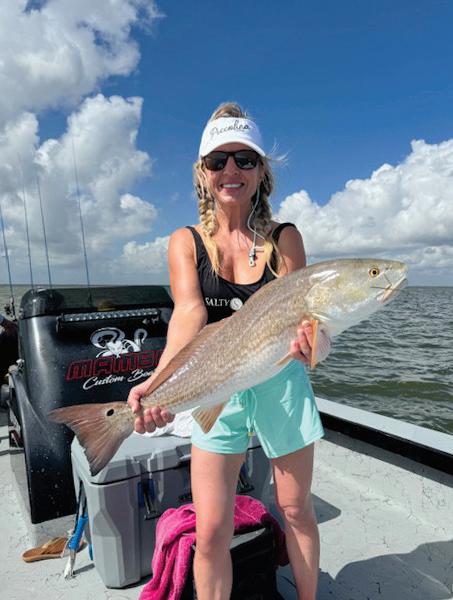





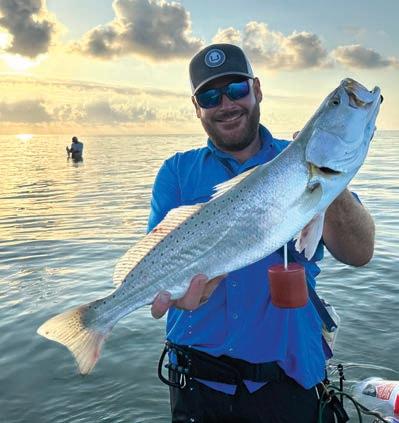


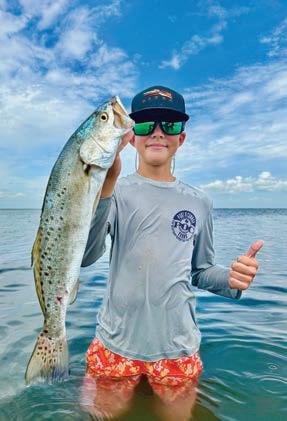

First come – first published! Photos are judged on artistic merit and sporting ethic displayed. No stringer, cleaning table, or hanging board images allowed. Digital images only. Adjust camera to high or best quality. All images become property of TSFMag. Email to: Photos@TSFMag.com Include short description of your catch with name, date, bay system, etc.

Got ideas, hints or recipes you’d like to share? Email them to pam@tsfmag.com or send by fax: 361 792-4530

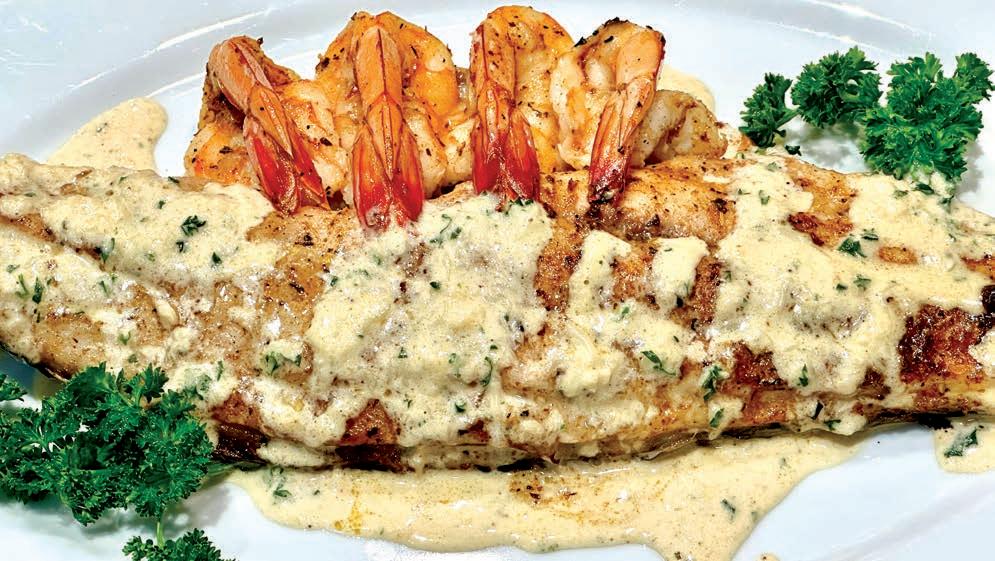
Many thanks to my good friend Wendy Nix for sharing this wonderful recipe. My dinner guests all agree it’s the best way to enjoy grilled redfish they’ve ever tried.
2 skin-on redfish fillets
8-10 large shrimp, peeled and deveined
1 tsp Cajun seasoning
1 stick of butter
2 tbsp unsalted butter
2 cloves garlic, minced
1/2 cup chicken broth
1 cup heavy cream
1 tsp Cajun seasoning
1/2 cup grated Parmesan cheese
1 tbsp chopped fresh parsley
Prepare grill to 375 degrees
Season redfish and shrimp with Cajun seasoning. Melt butter and brush generously on seasoned fish and shrimp. Cook redfish fillets for about 15 minutes skin side down, add shrimp in rib pocket and continue to cook 5 more minutes.
Cajun cream sauce can be made ahead or while grilling fish. In a skillet, melt the butter over medium heat. Add minced garlic and cook for about 1 minute until fragrant. Add chicken broth, heavy cream, and Cajun seasoning. Bring to a simmer and cook for about 5 minutes, or until the sauce thickens slightly. Stir in the grated Parmesan cheese and chopped parsley.
Remove fillets from grill and plate, drizzle with Cajun cream sauce.
Serve immediately and enjoy!
Yields – 2 Servings


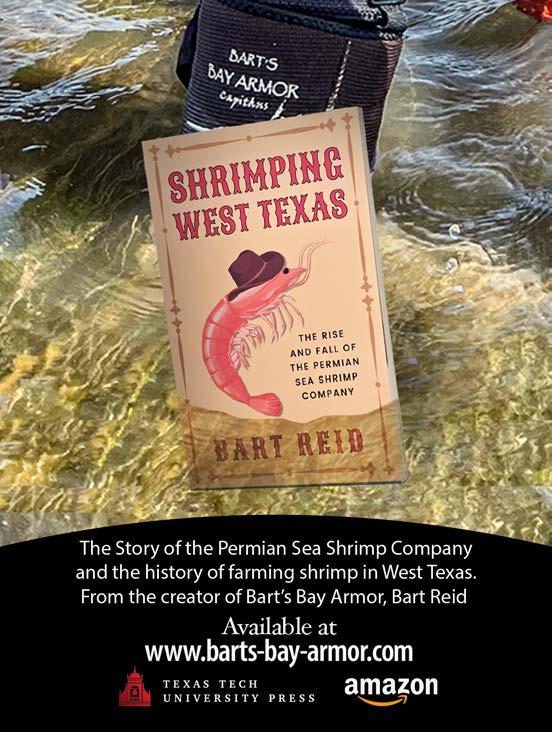



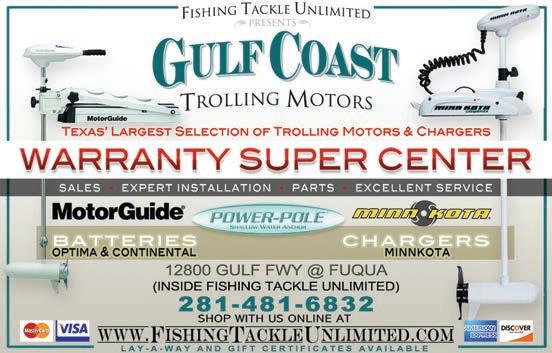
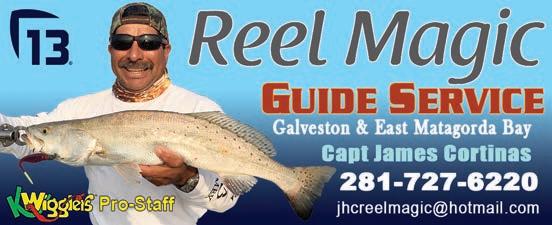





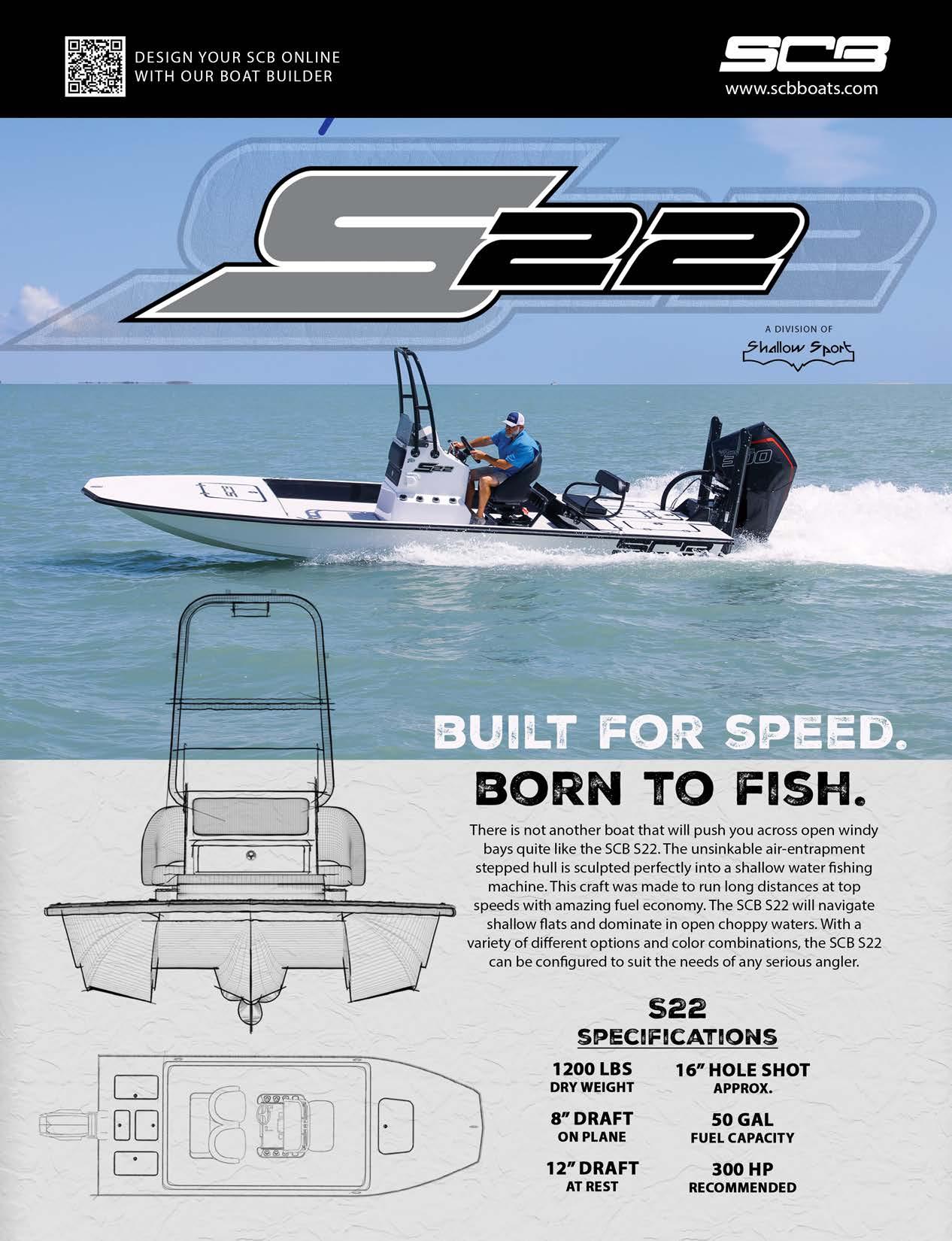









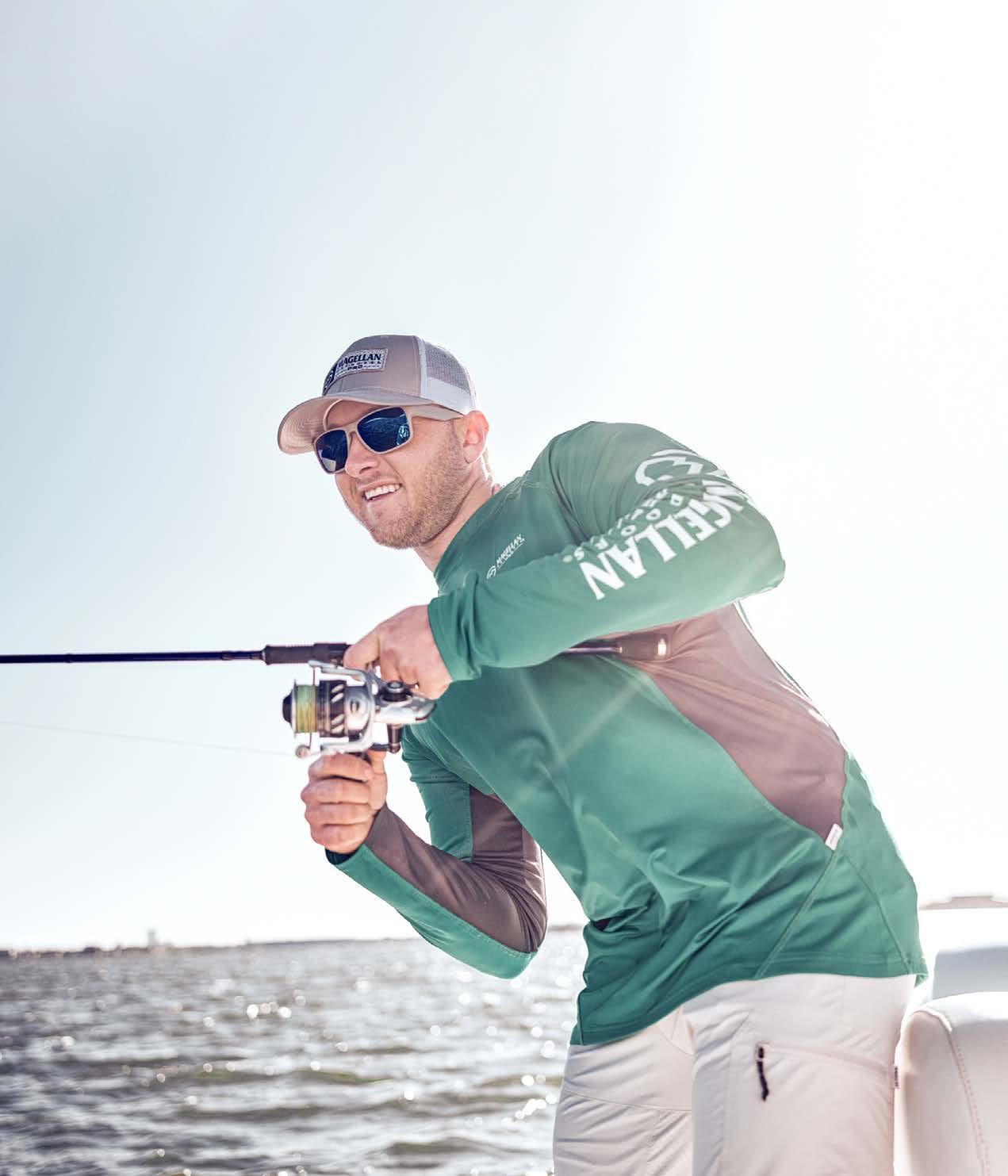
Catch the best value on top brands in fishing gear.